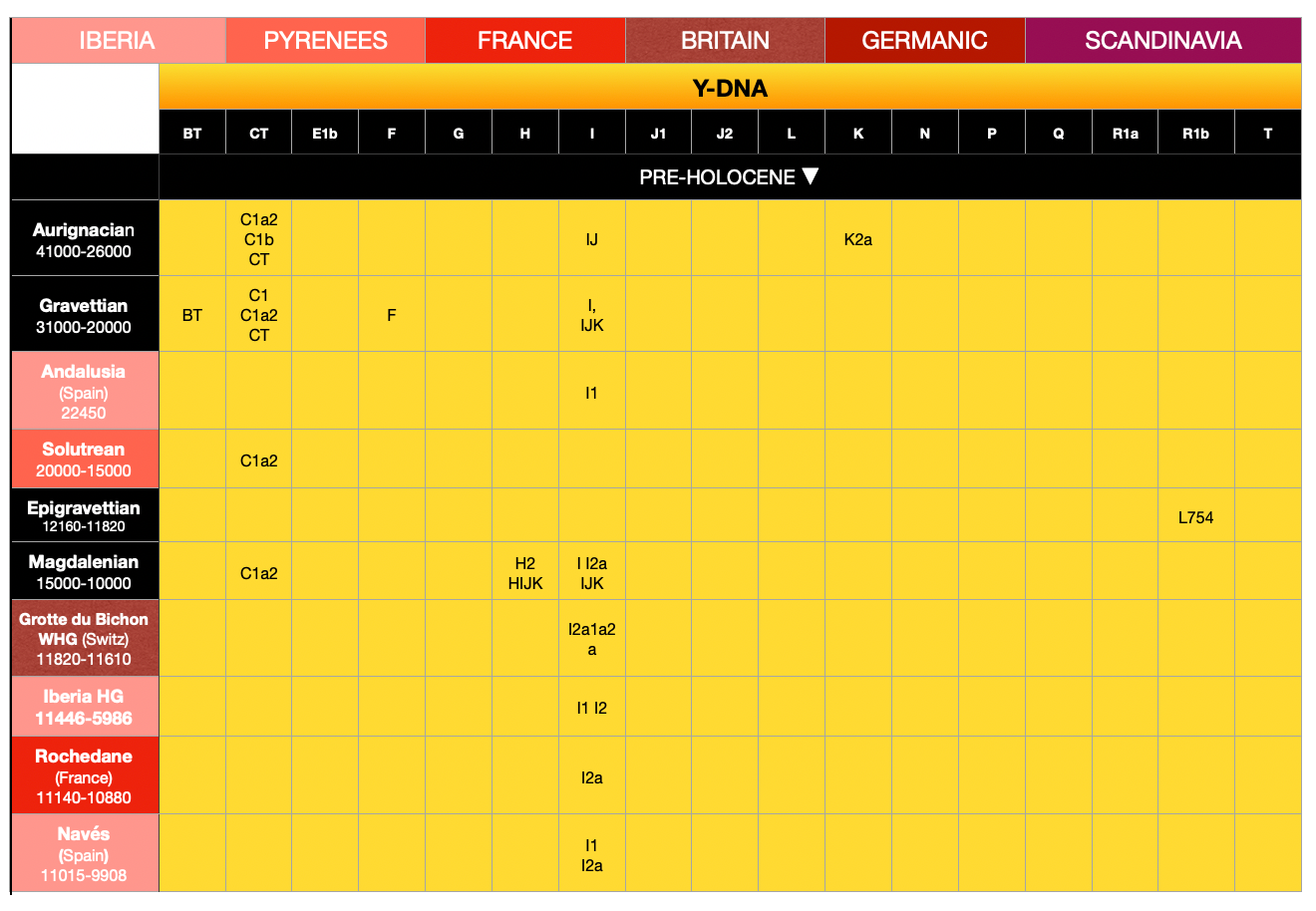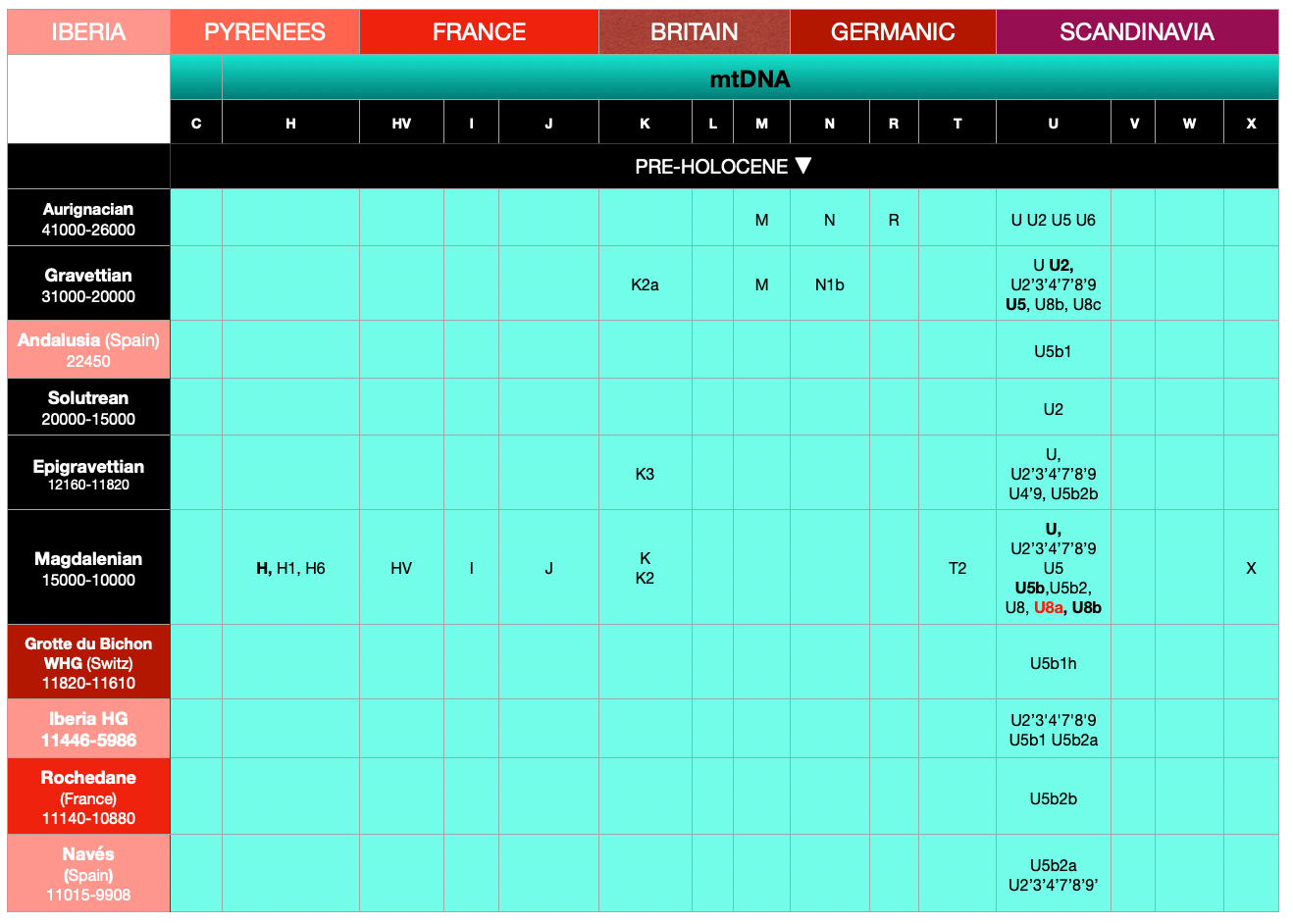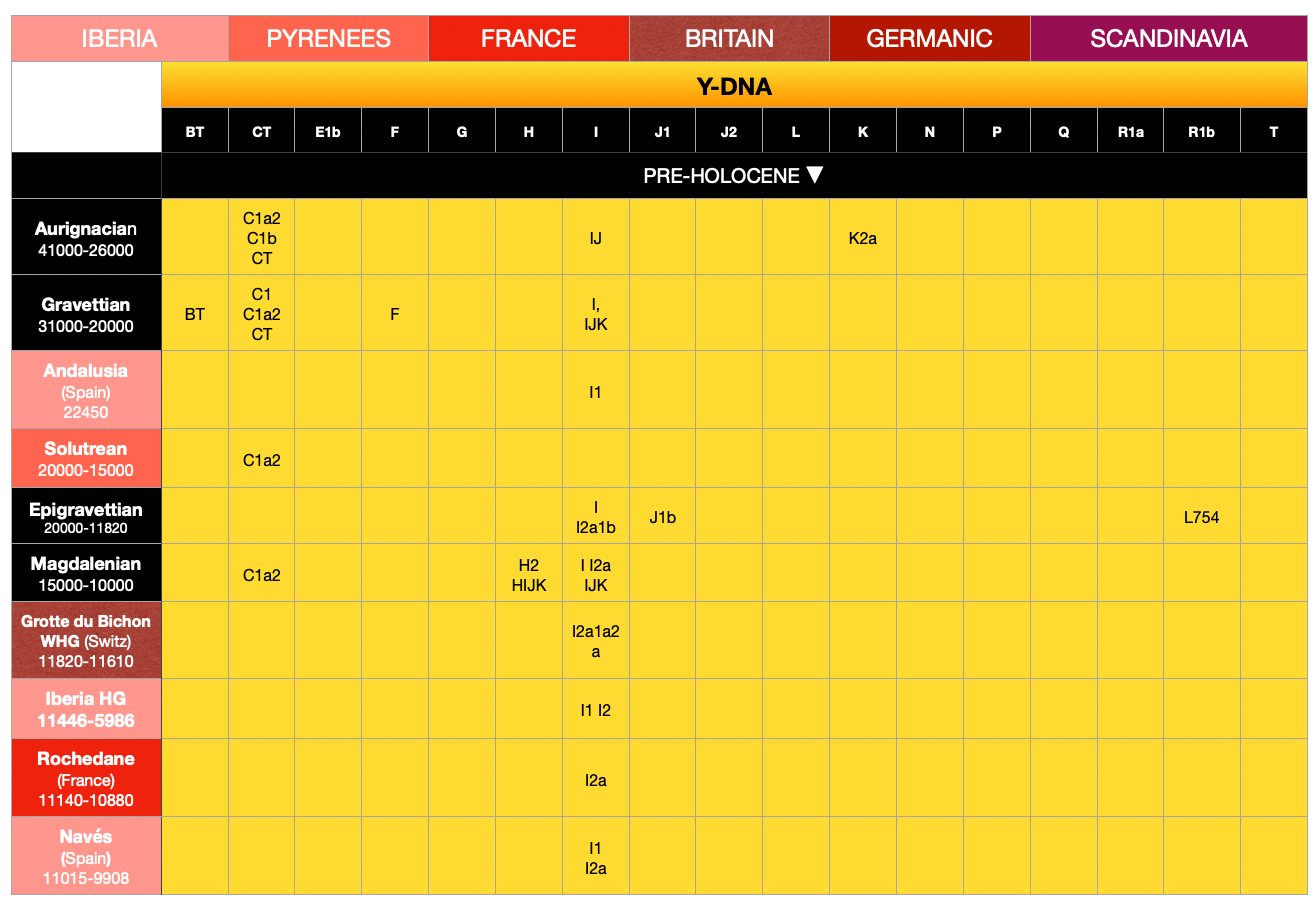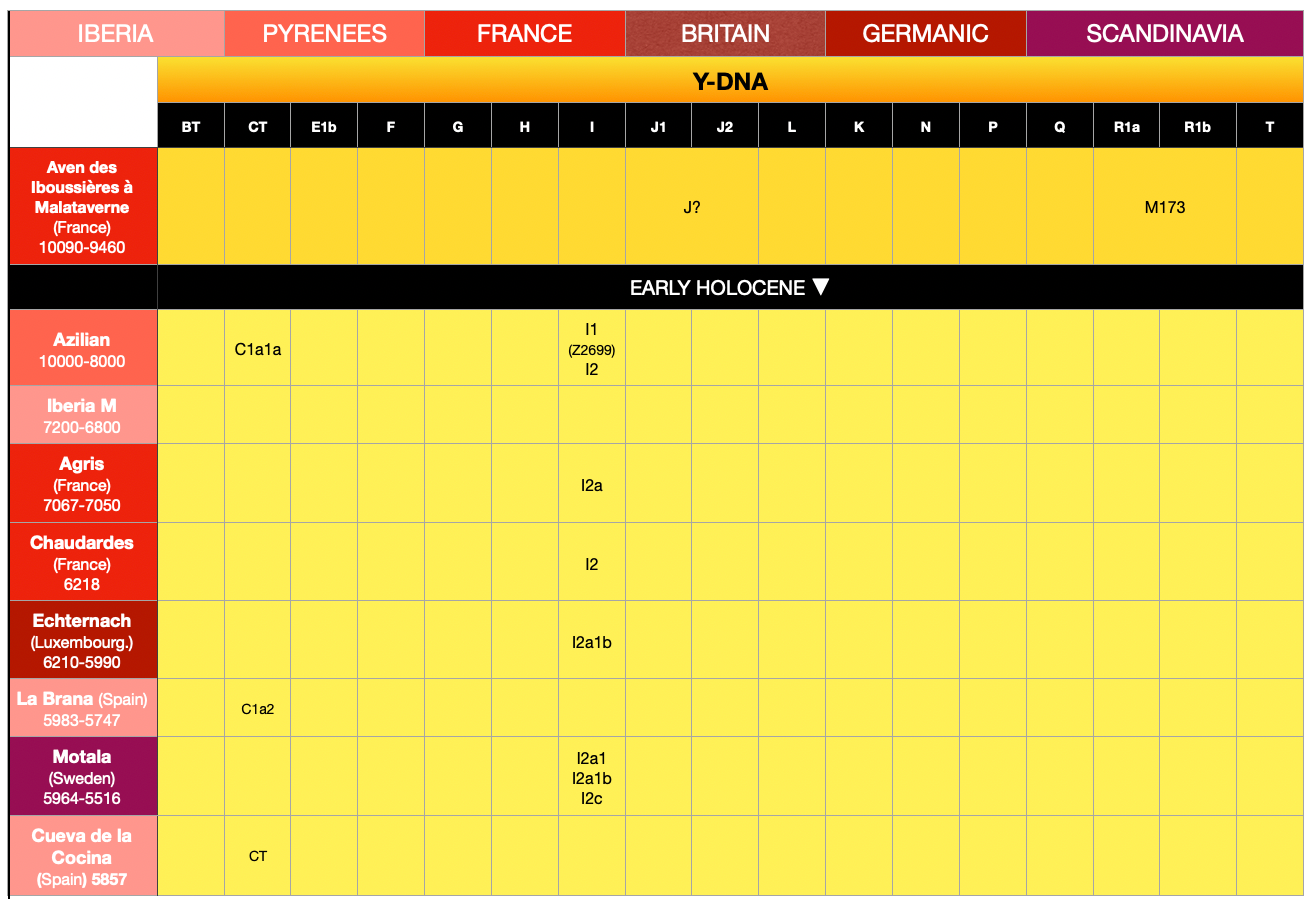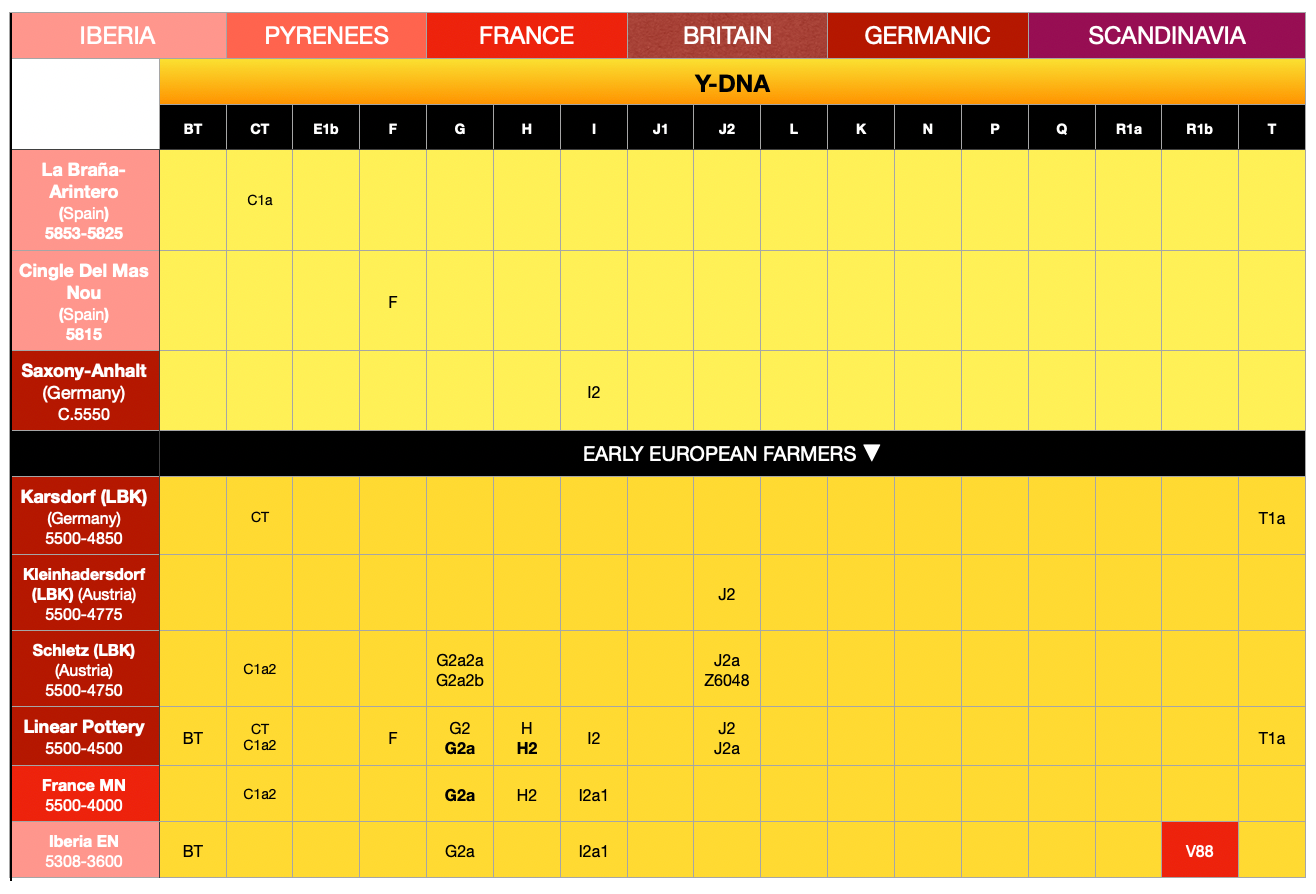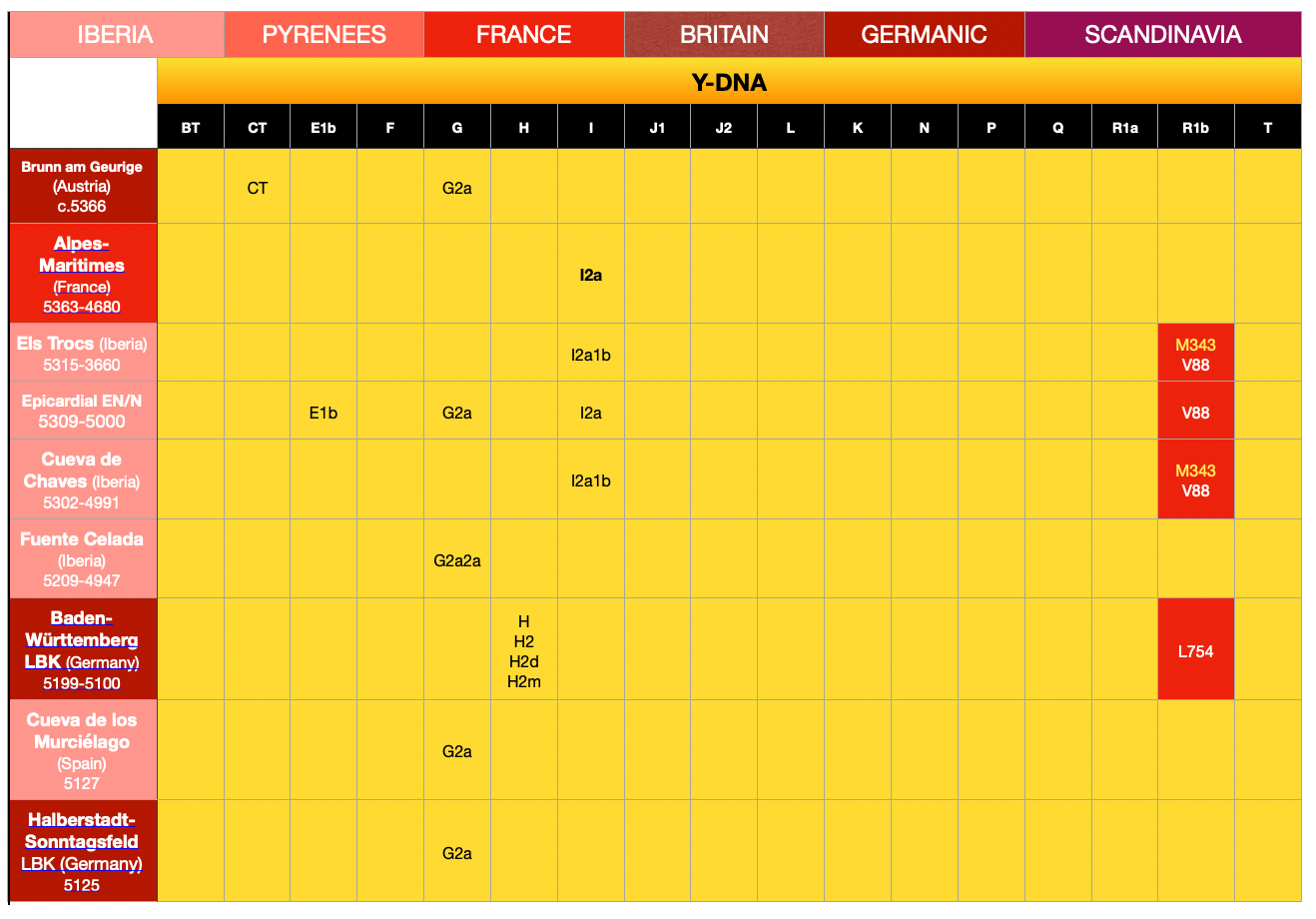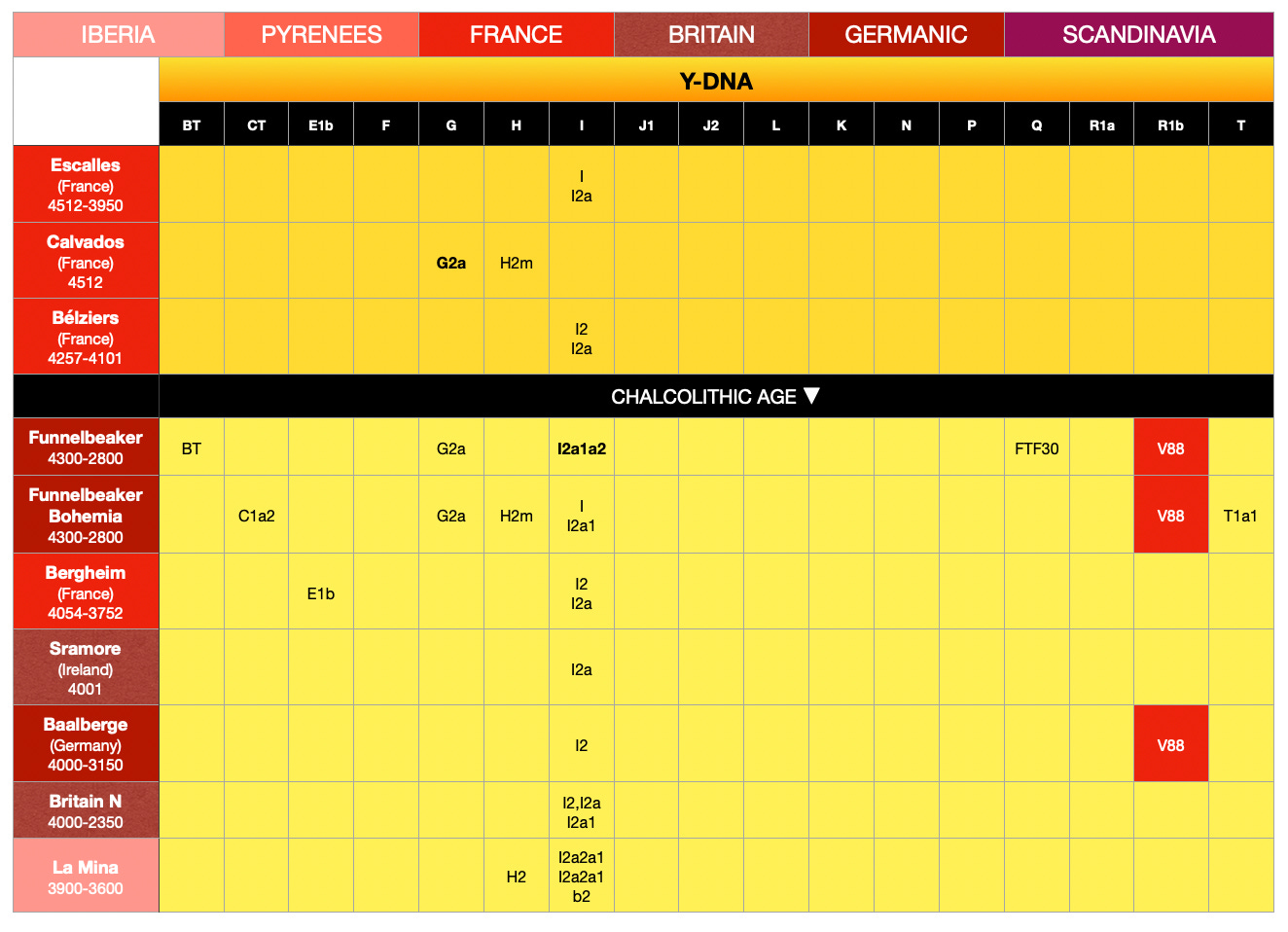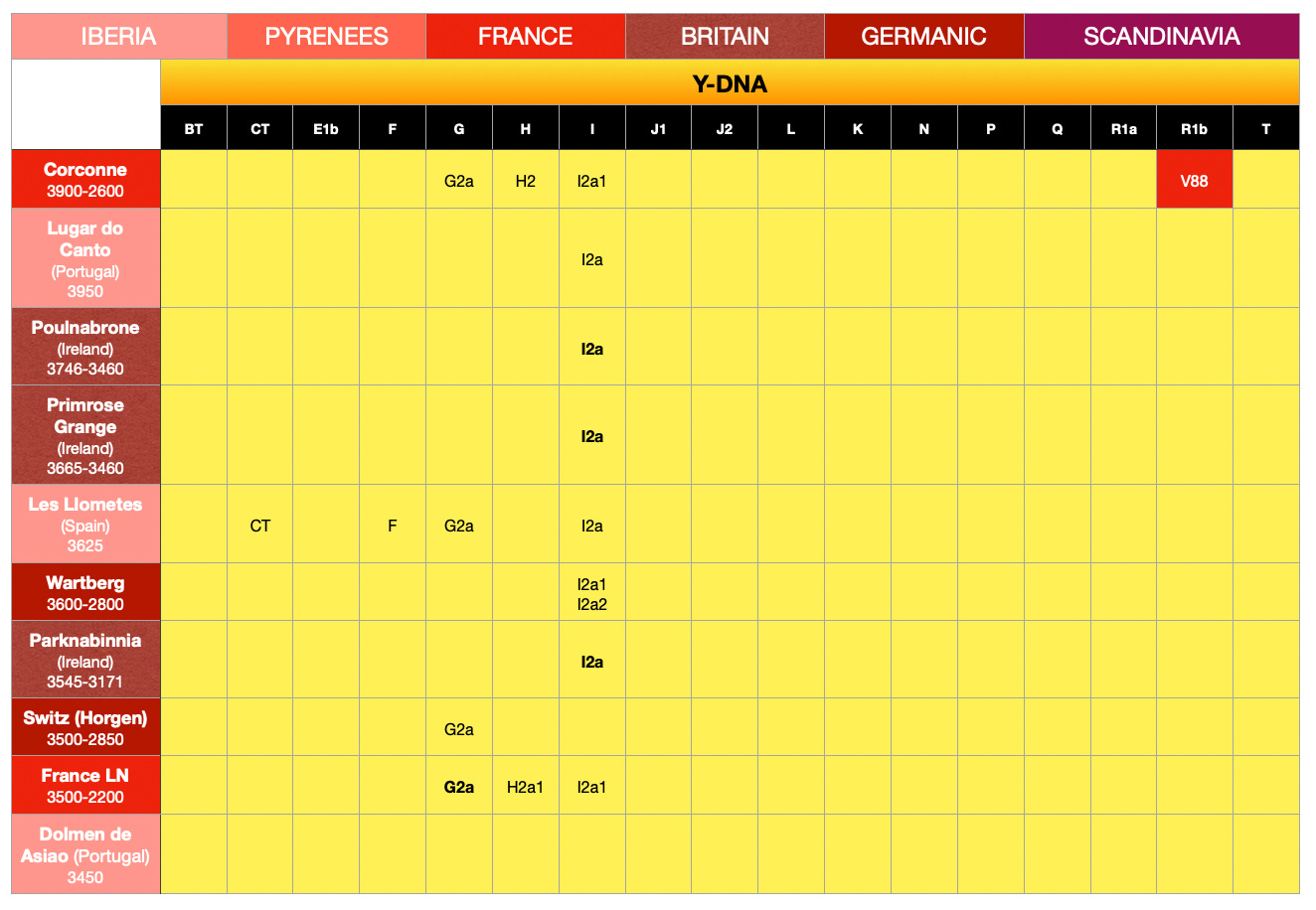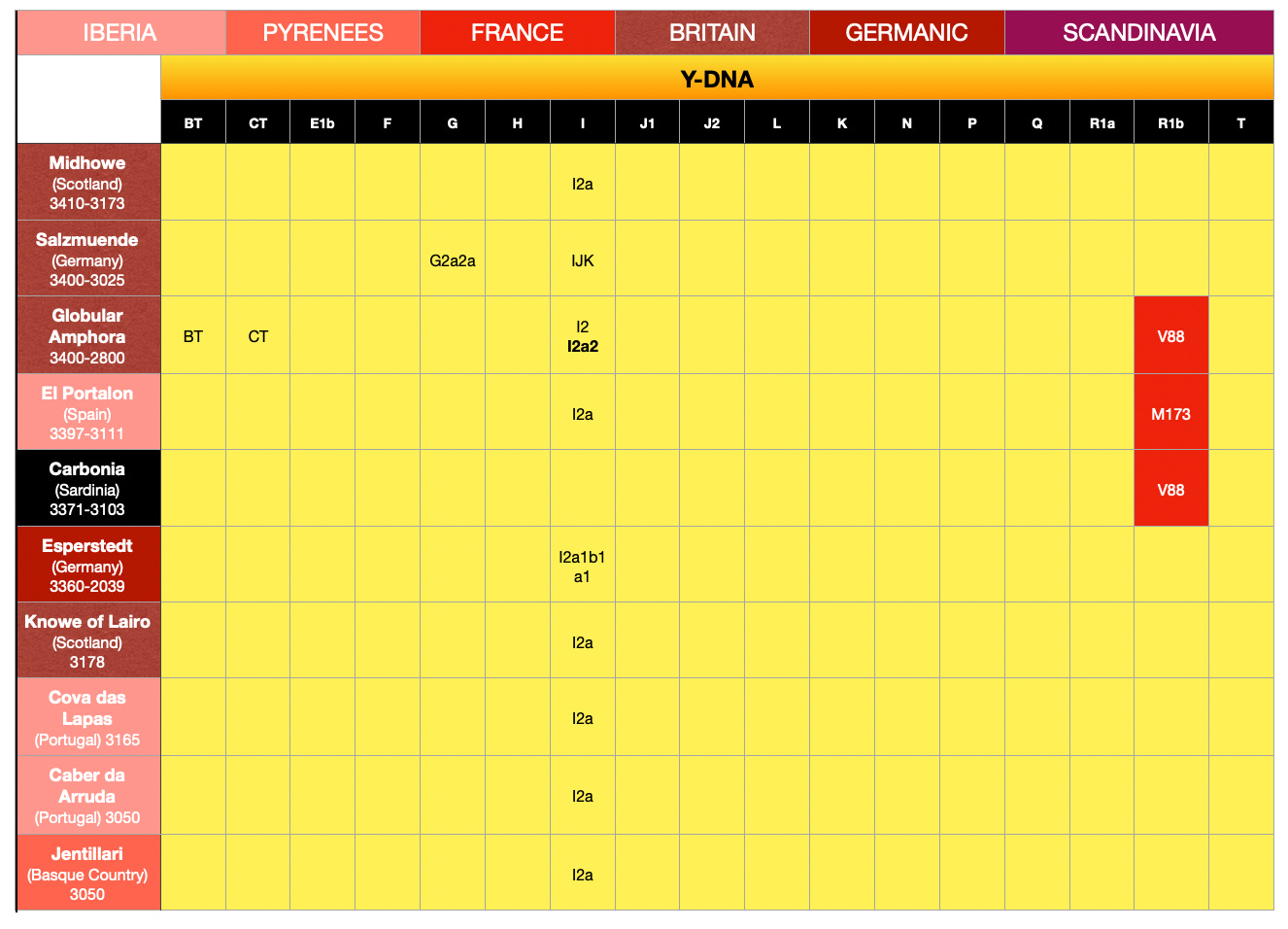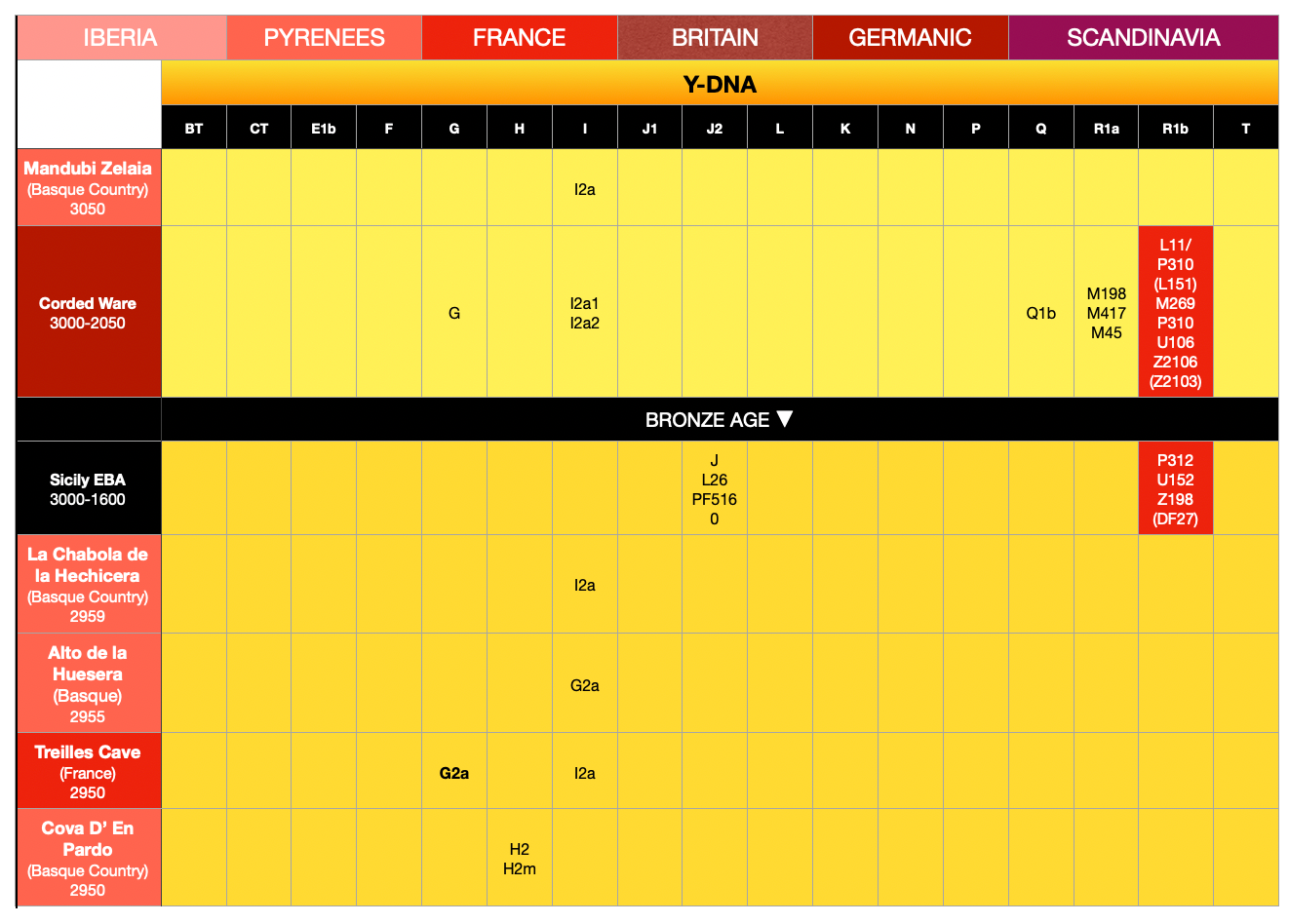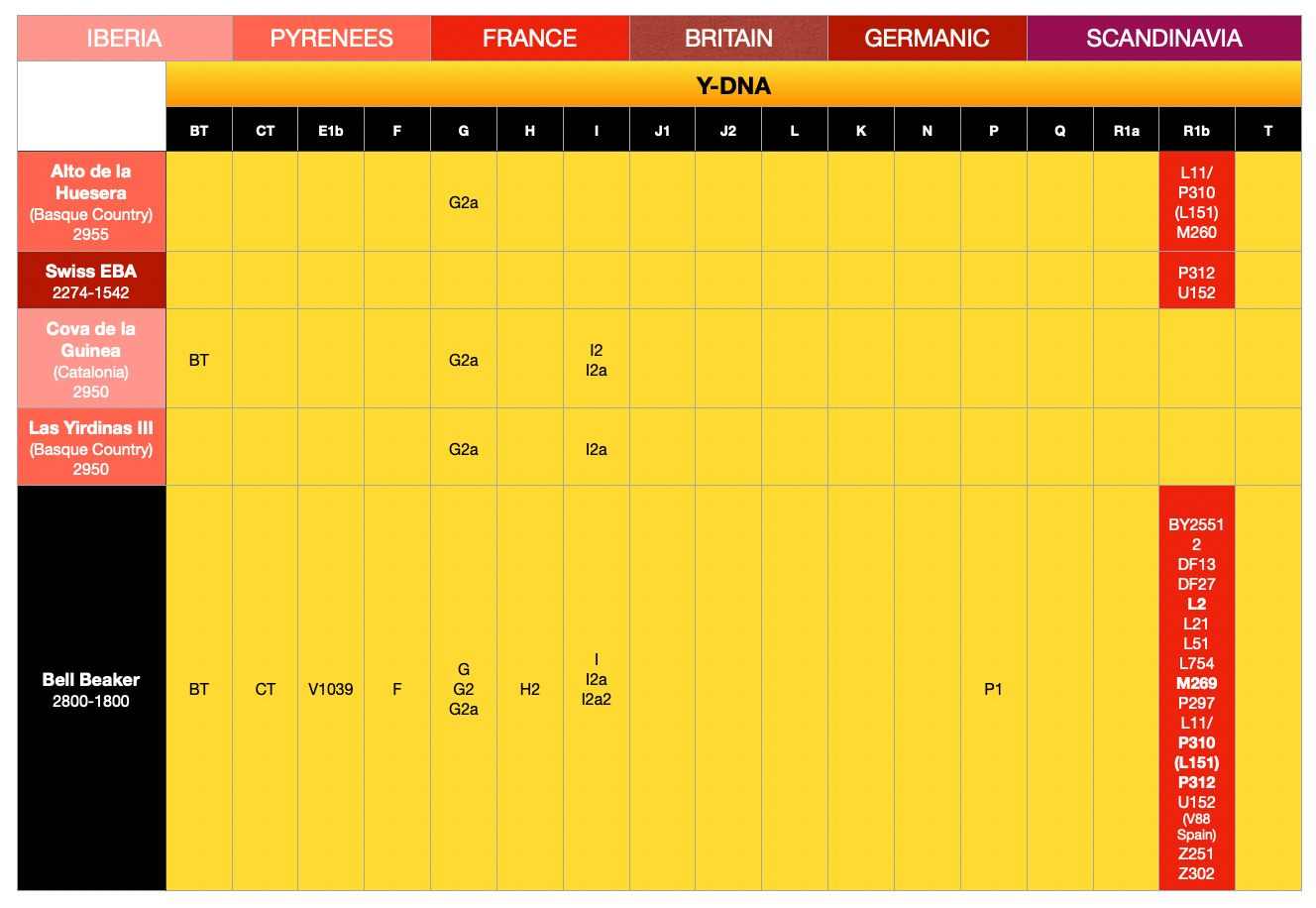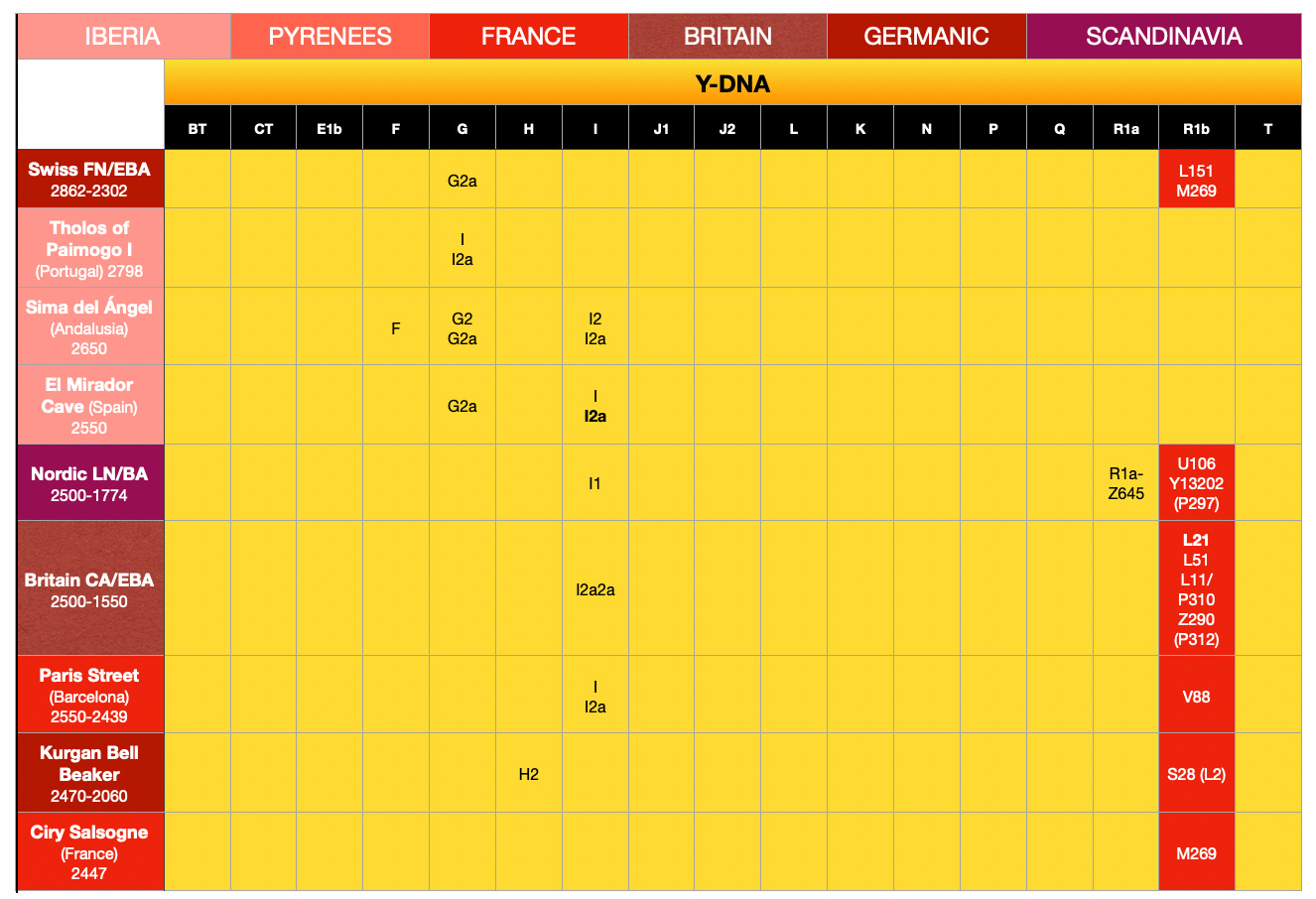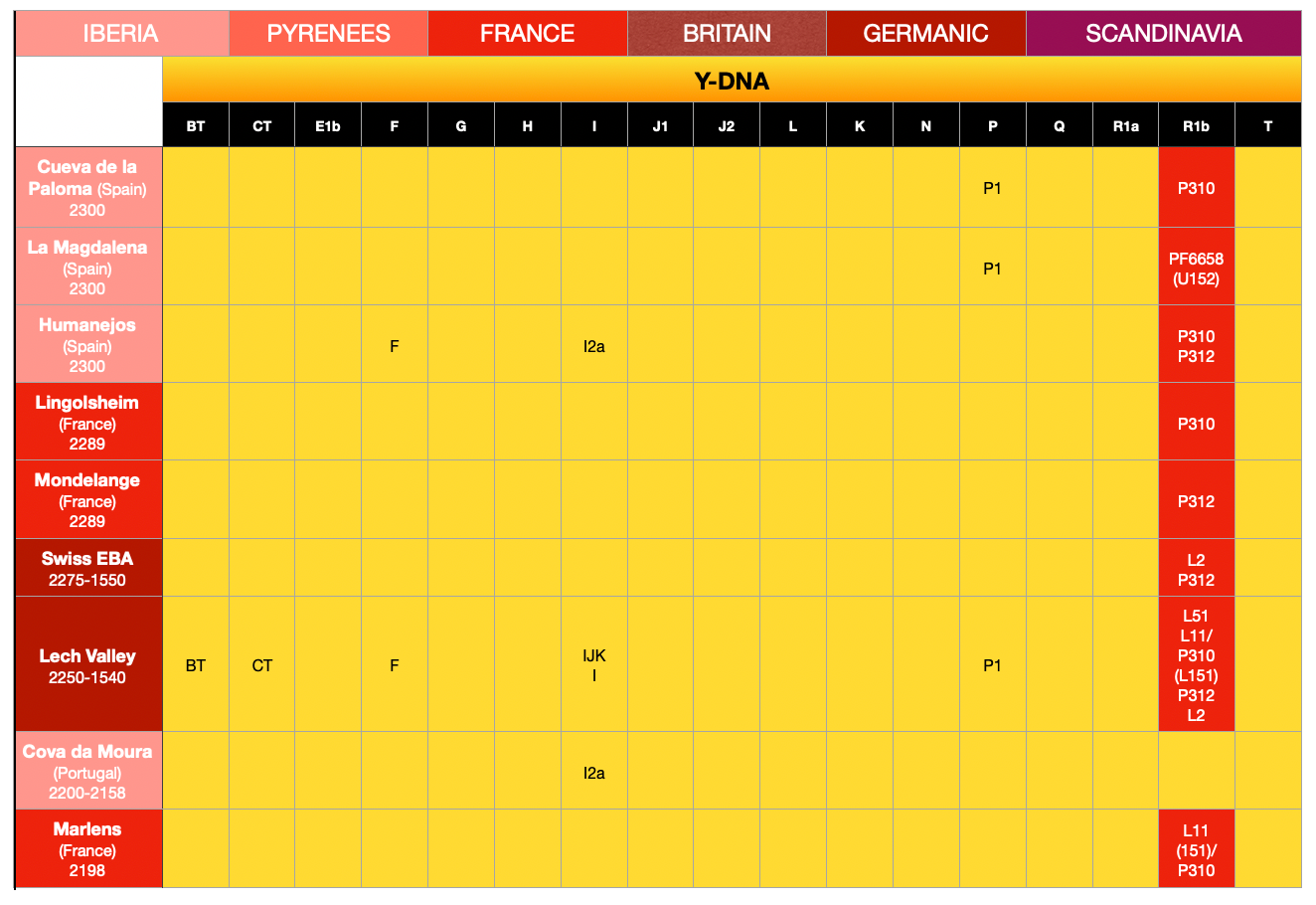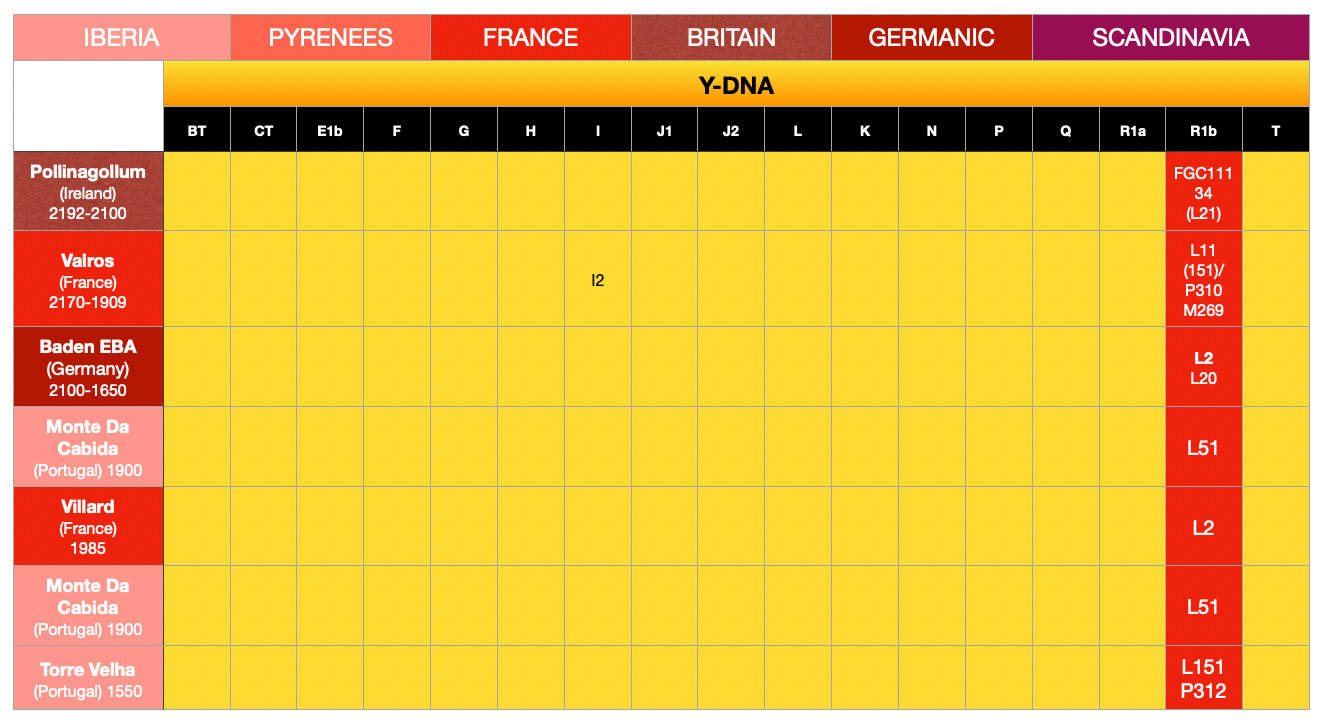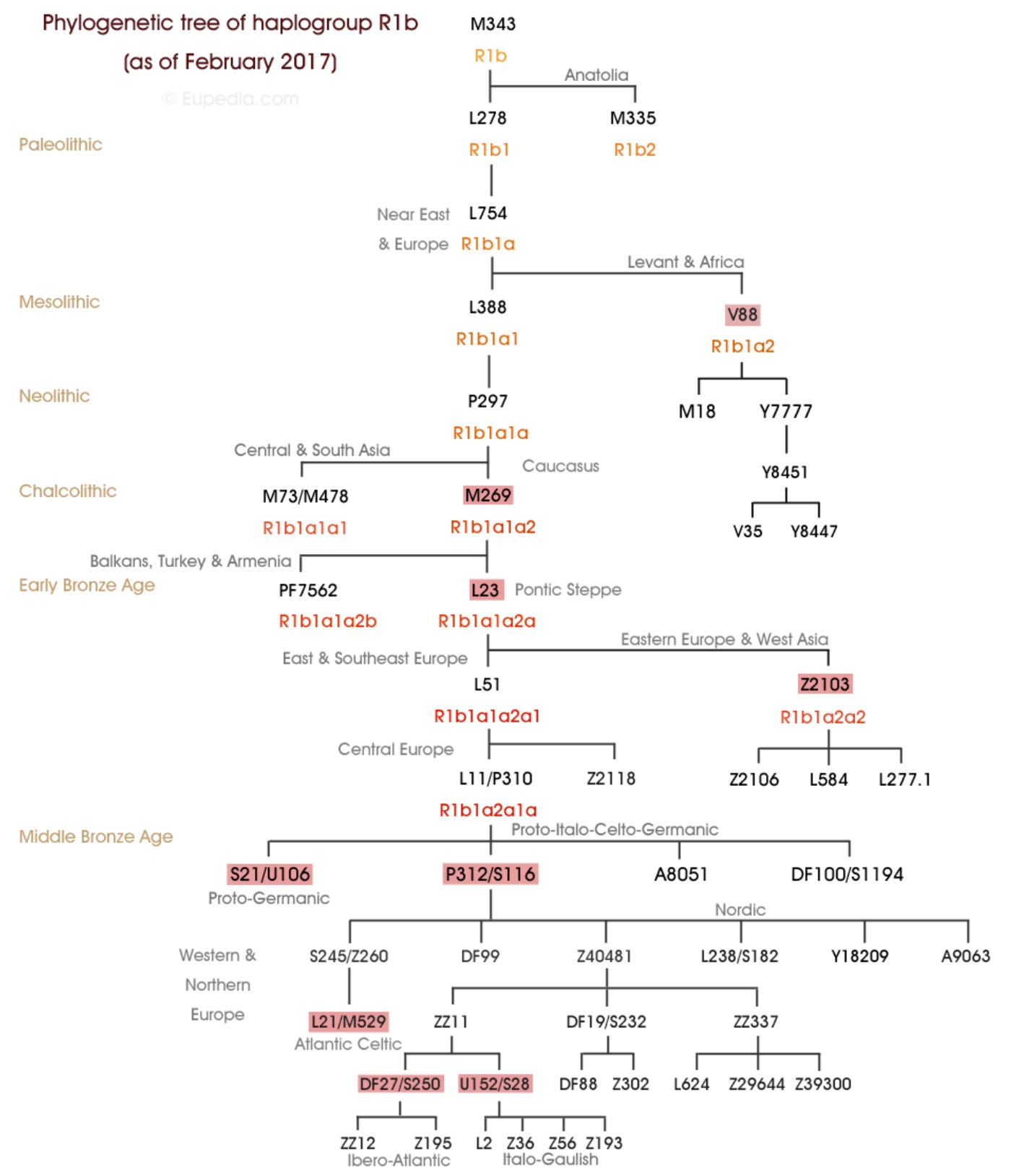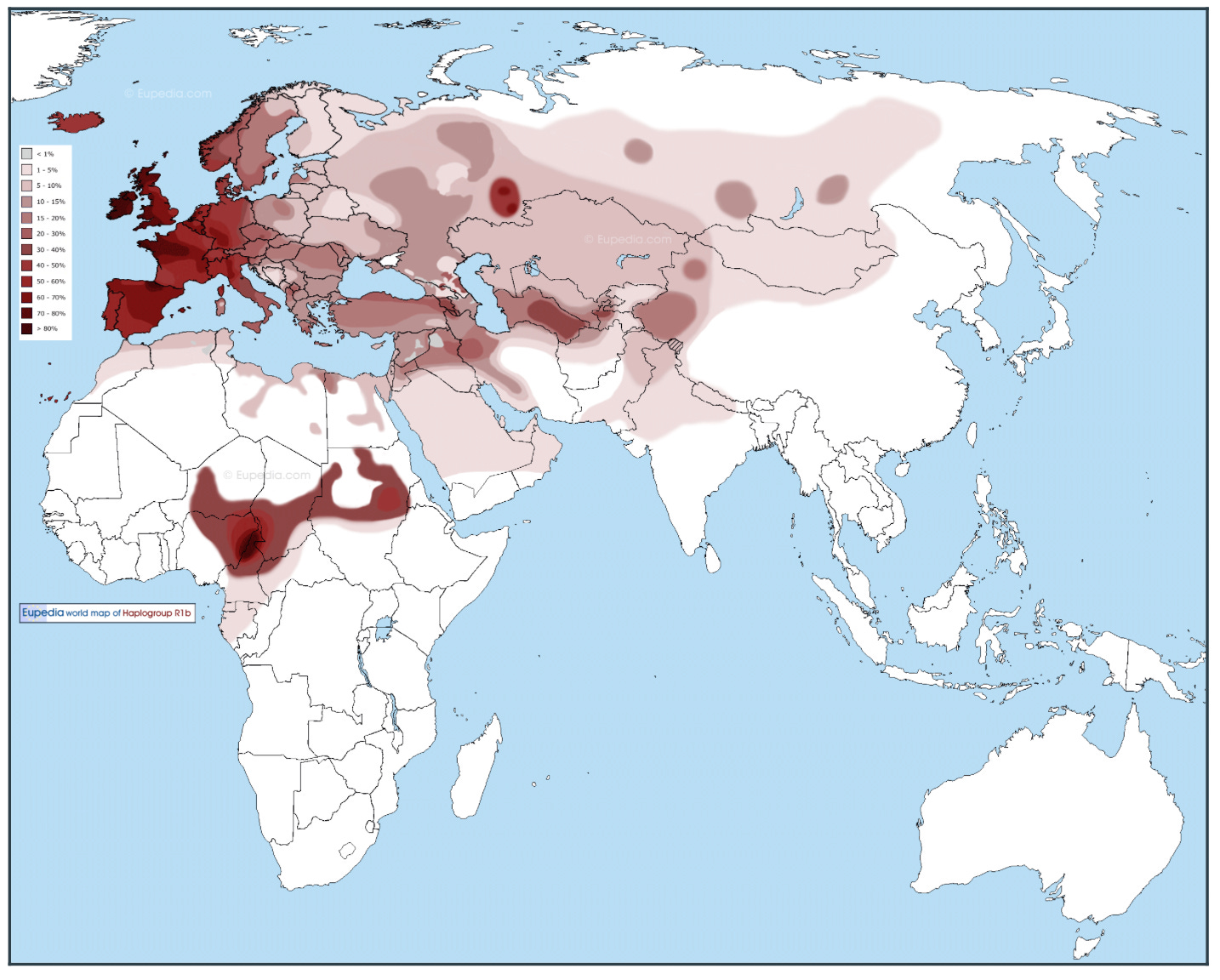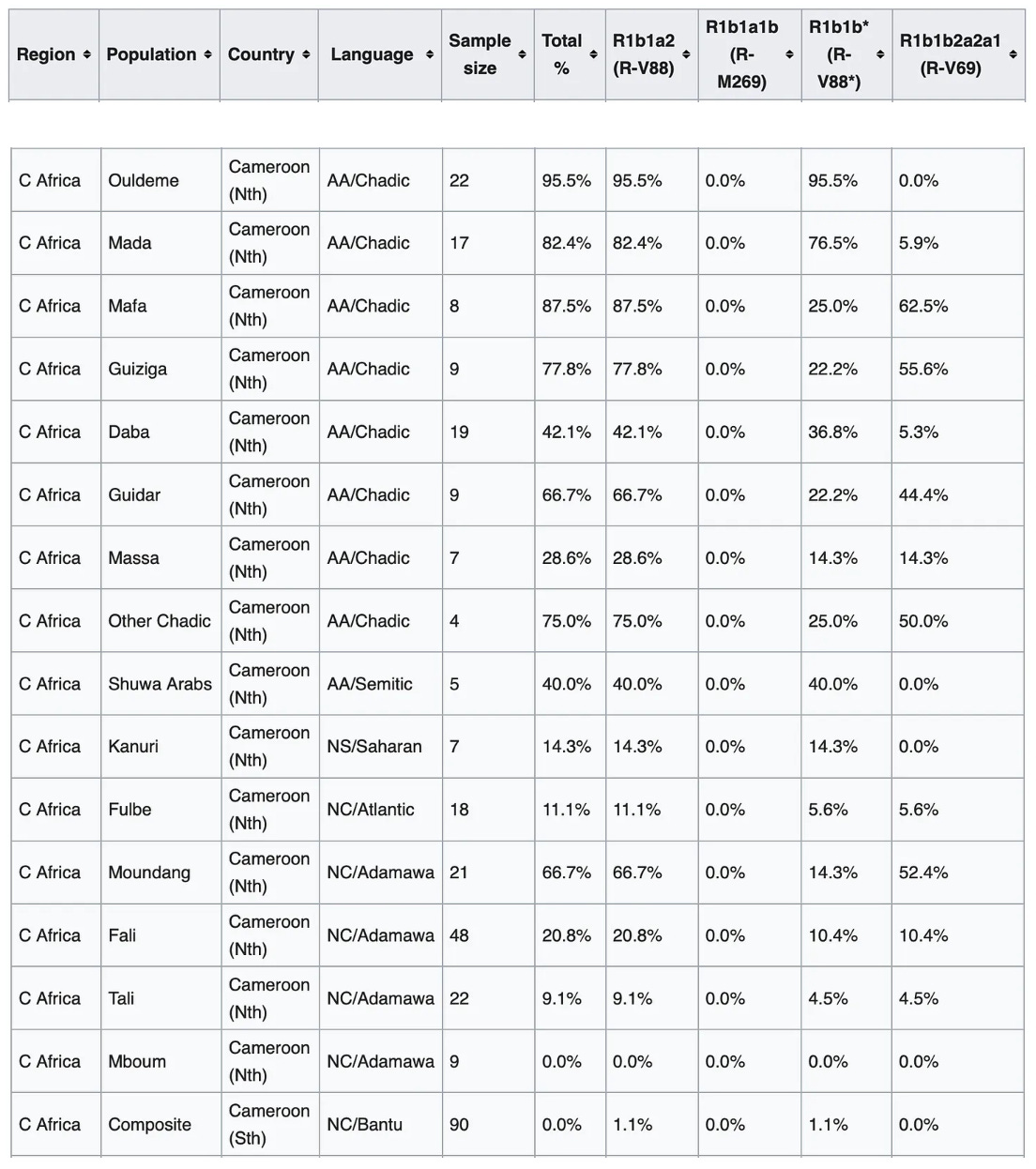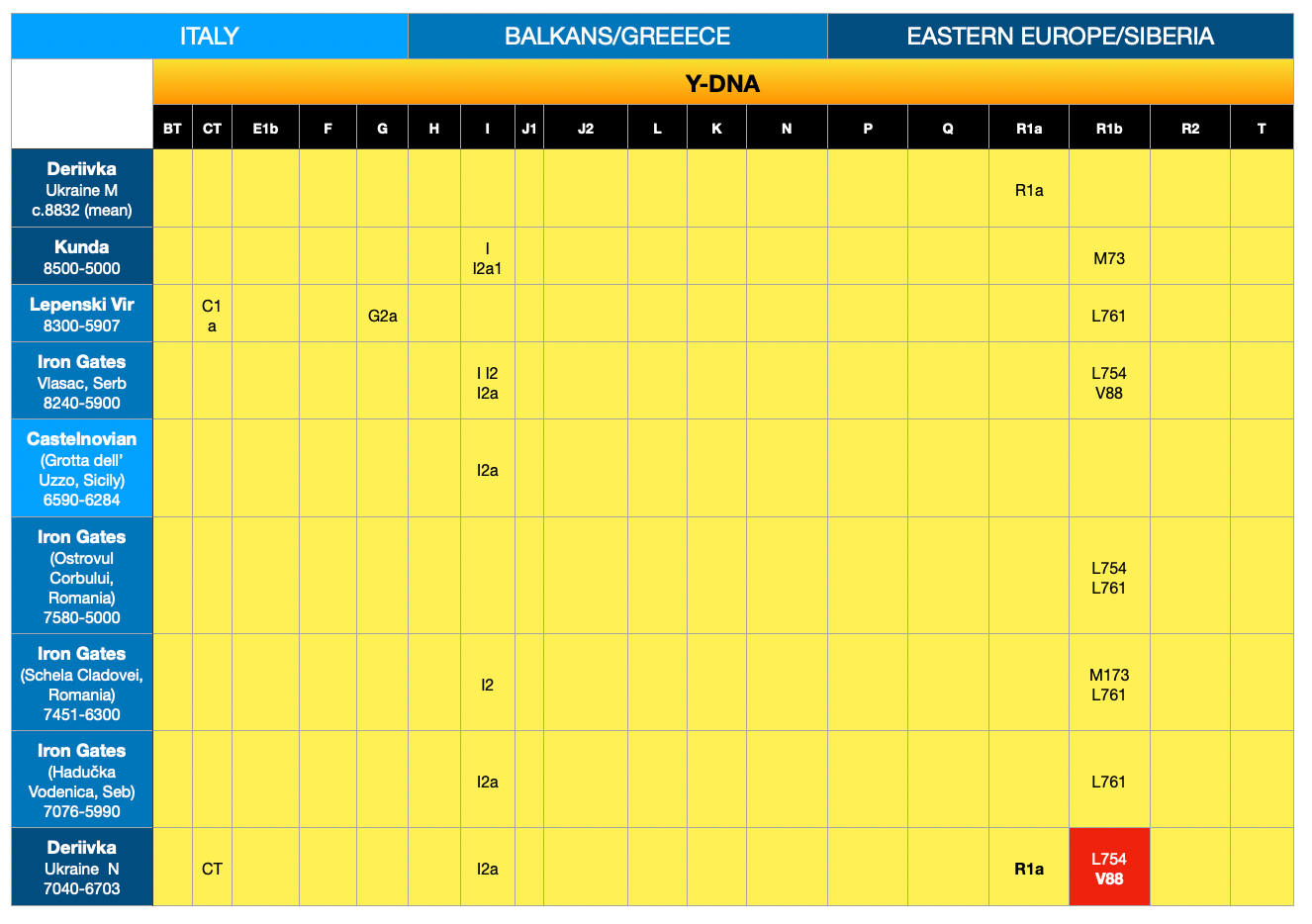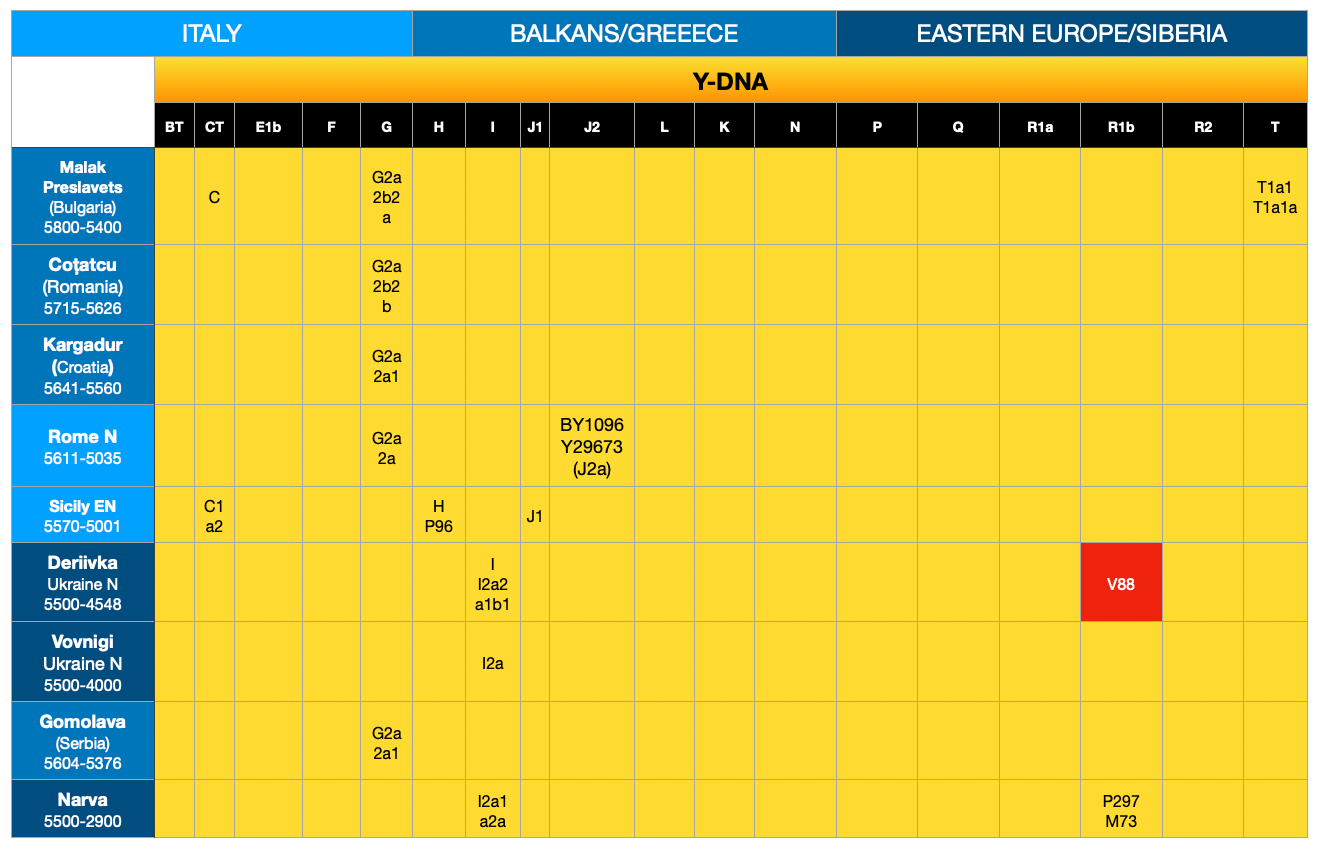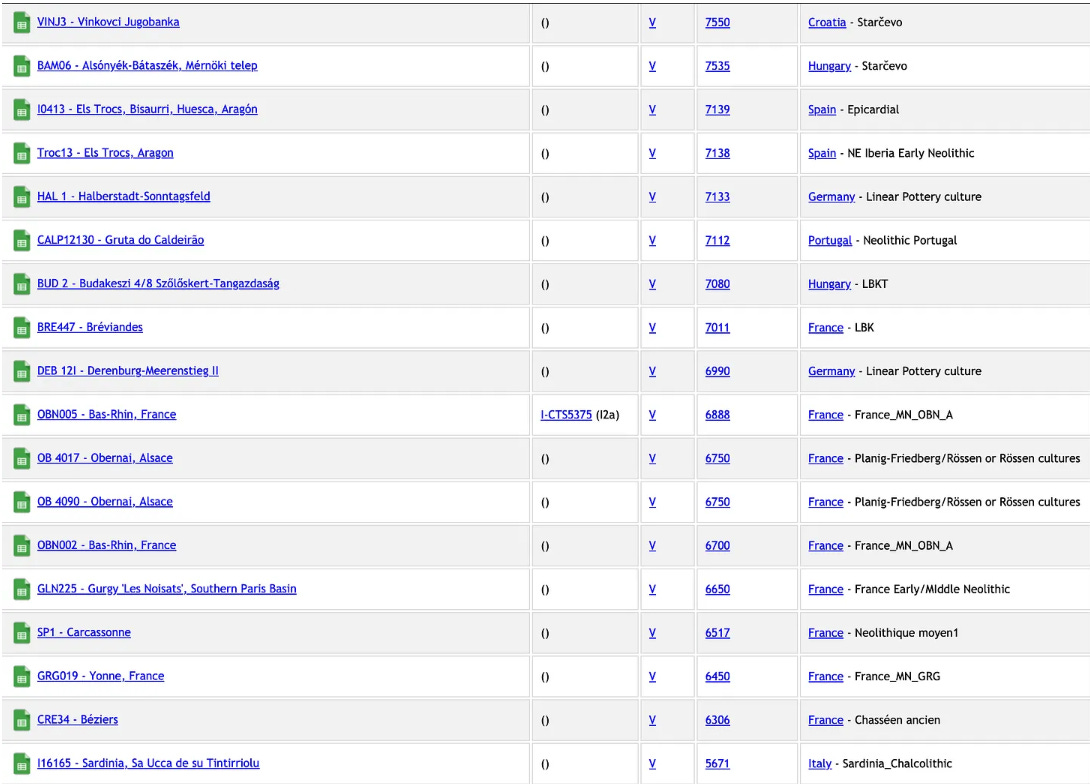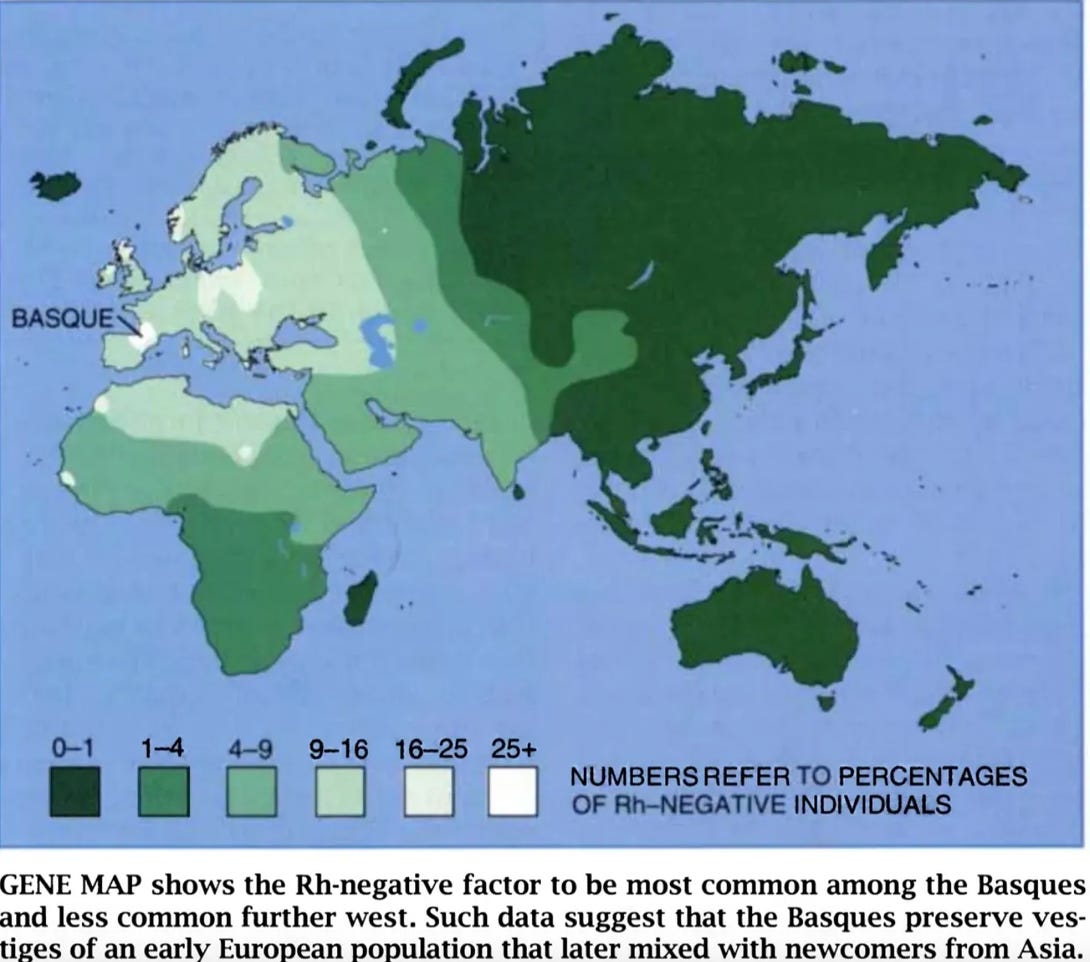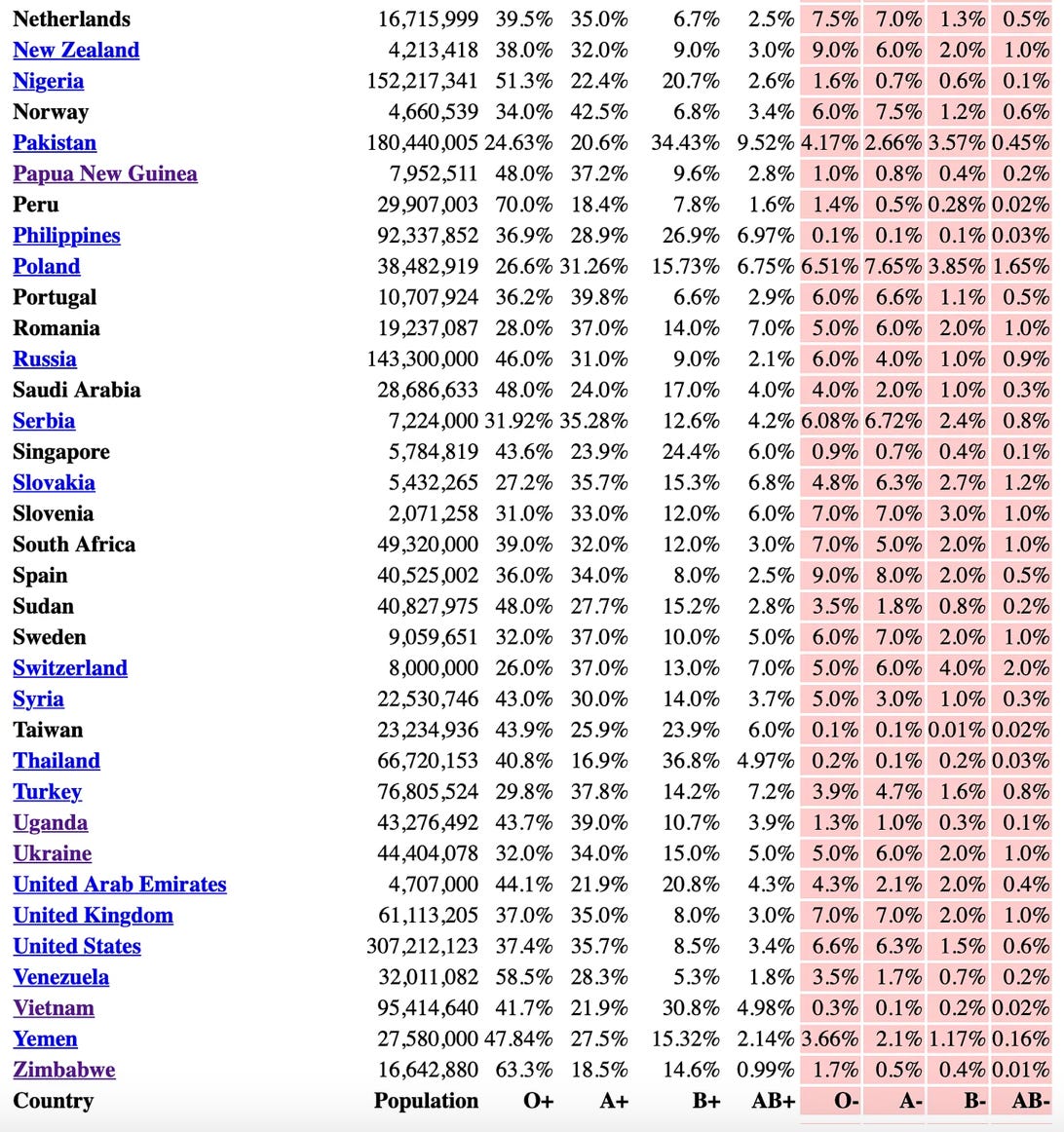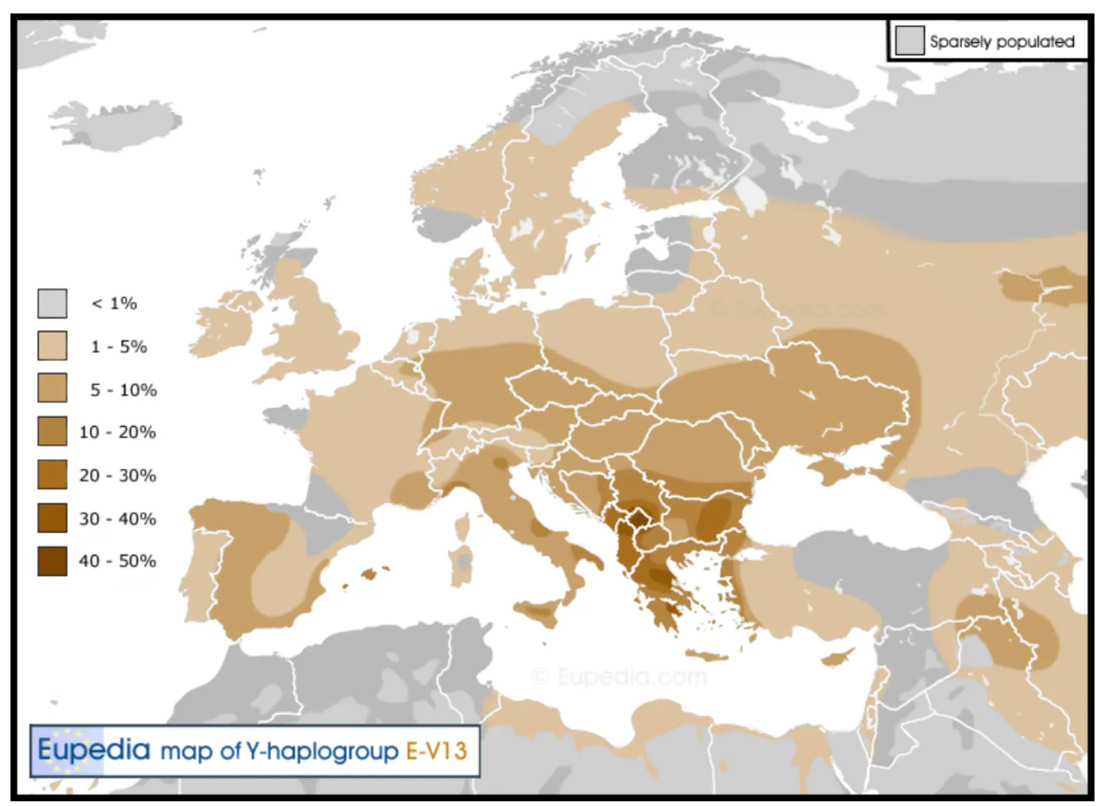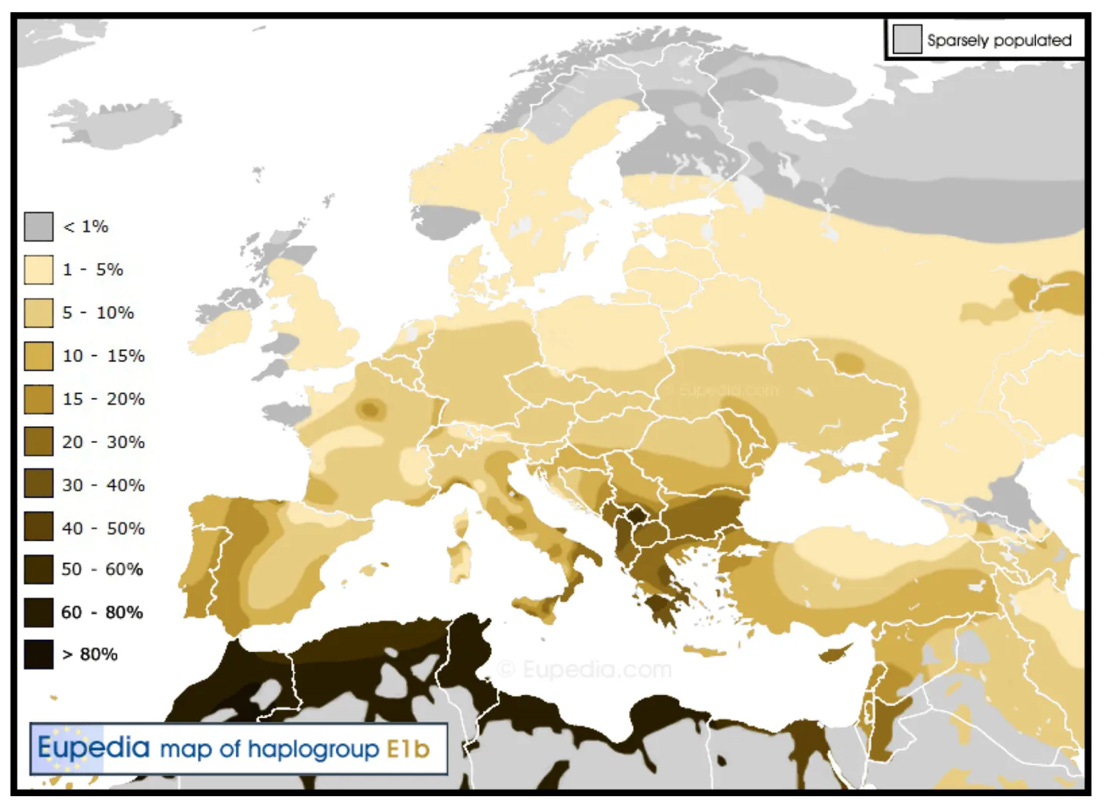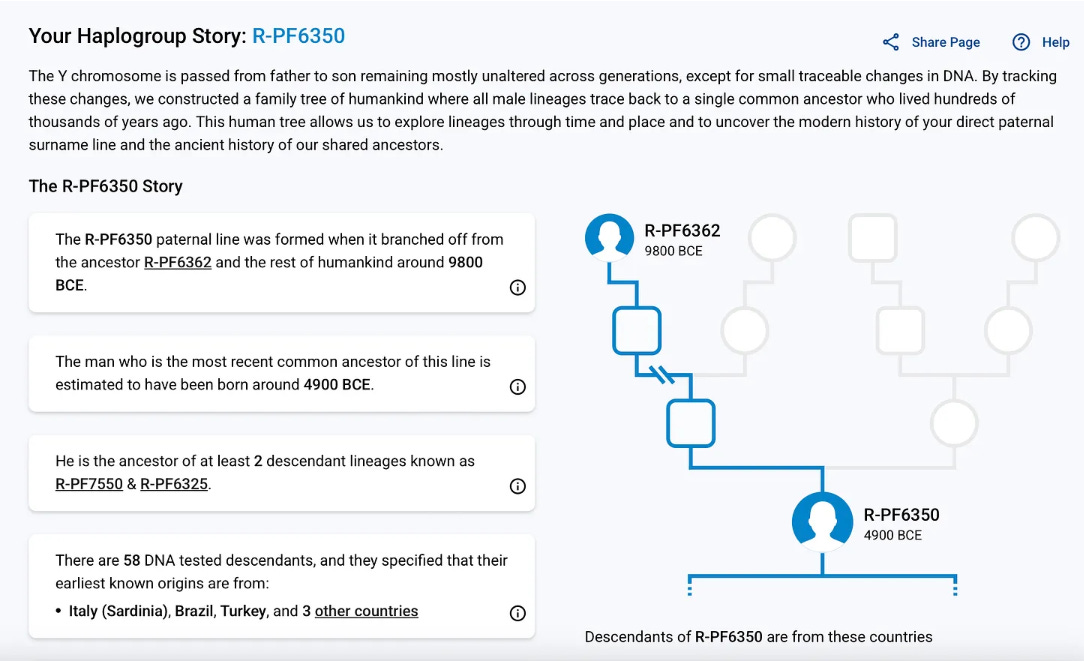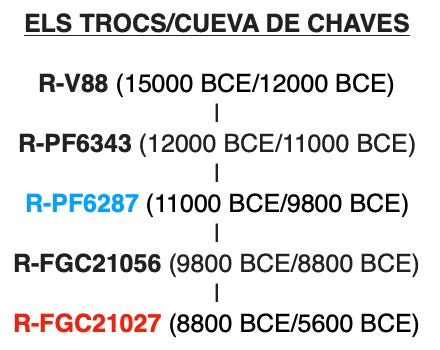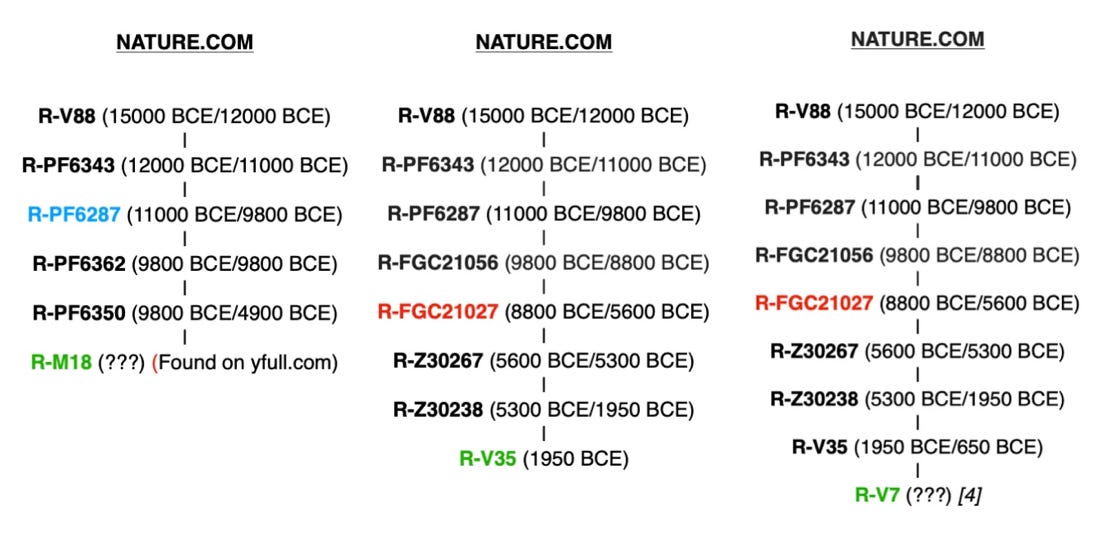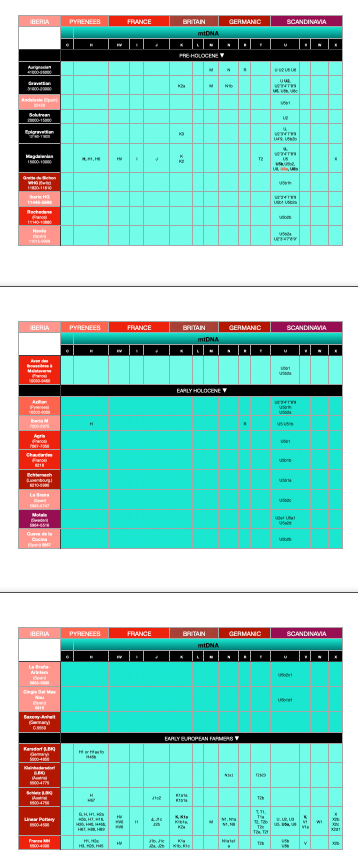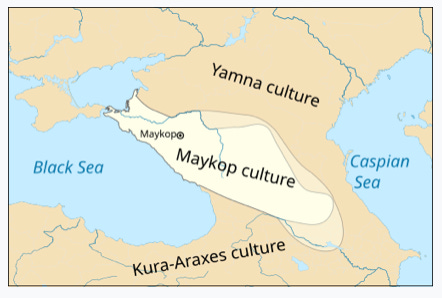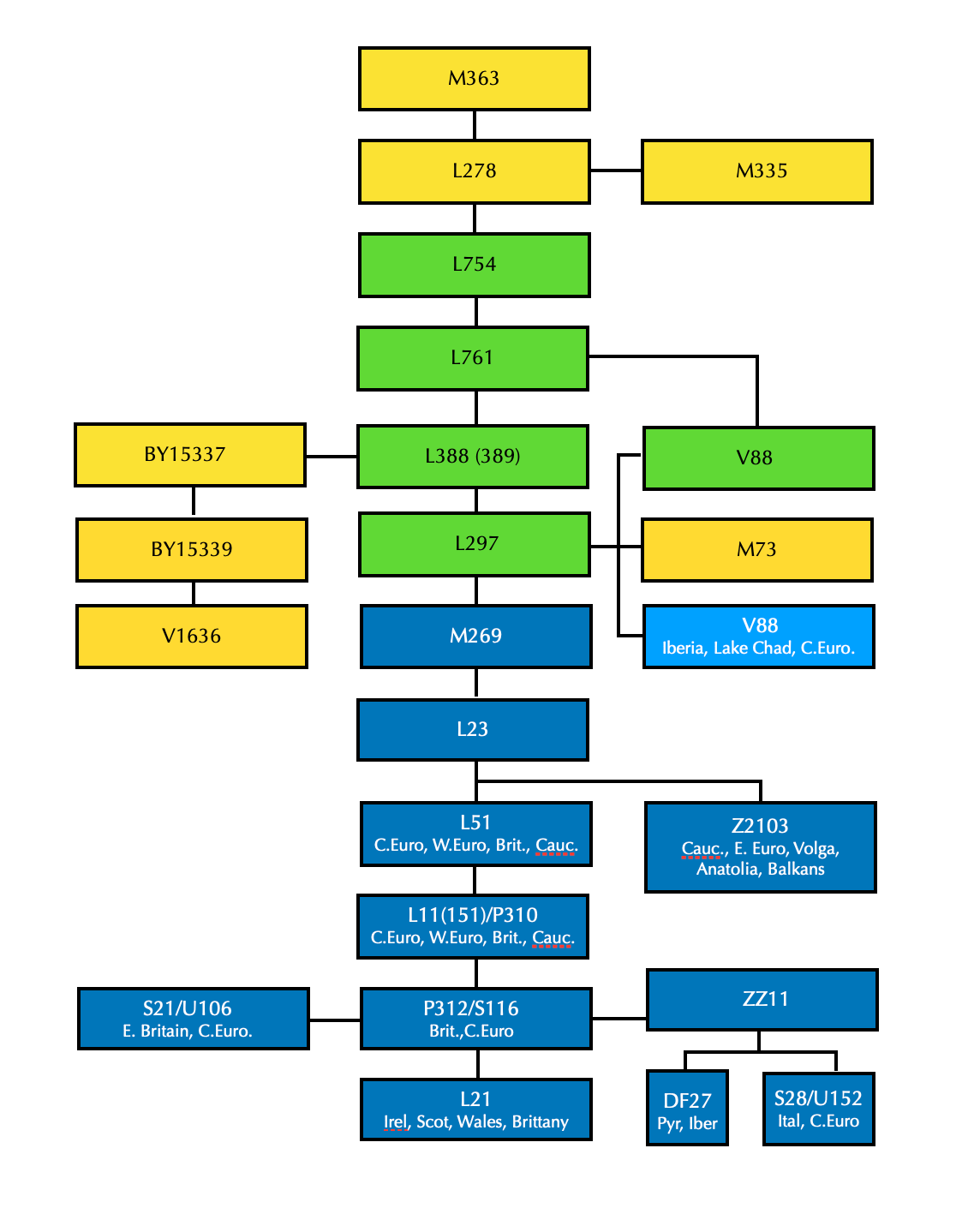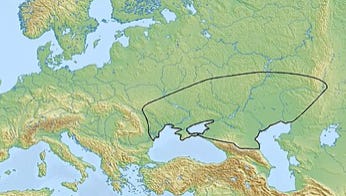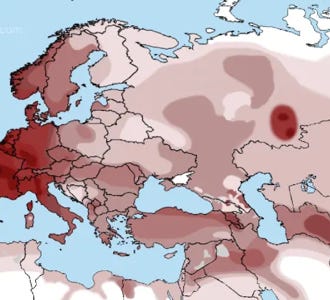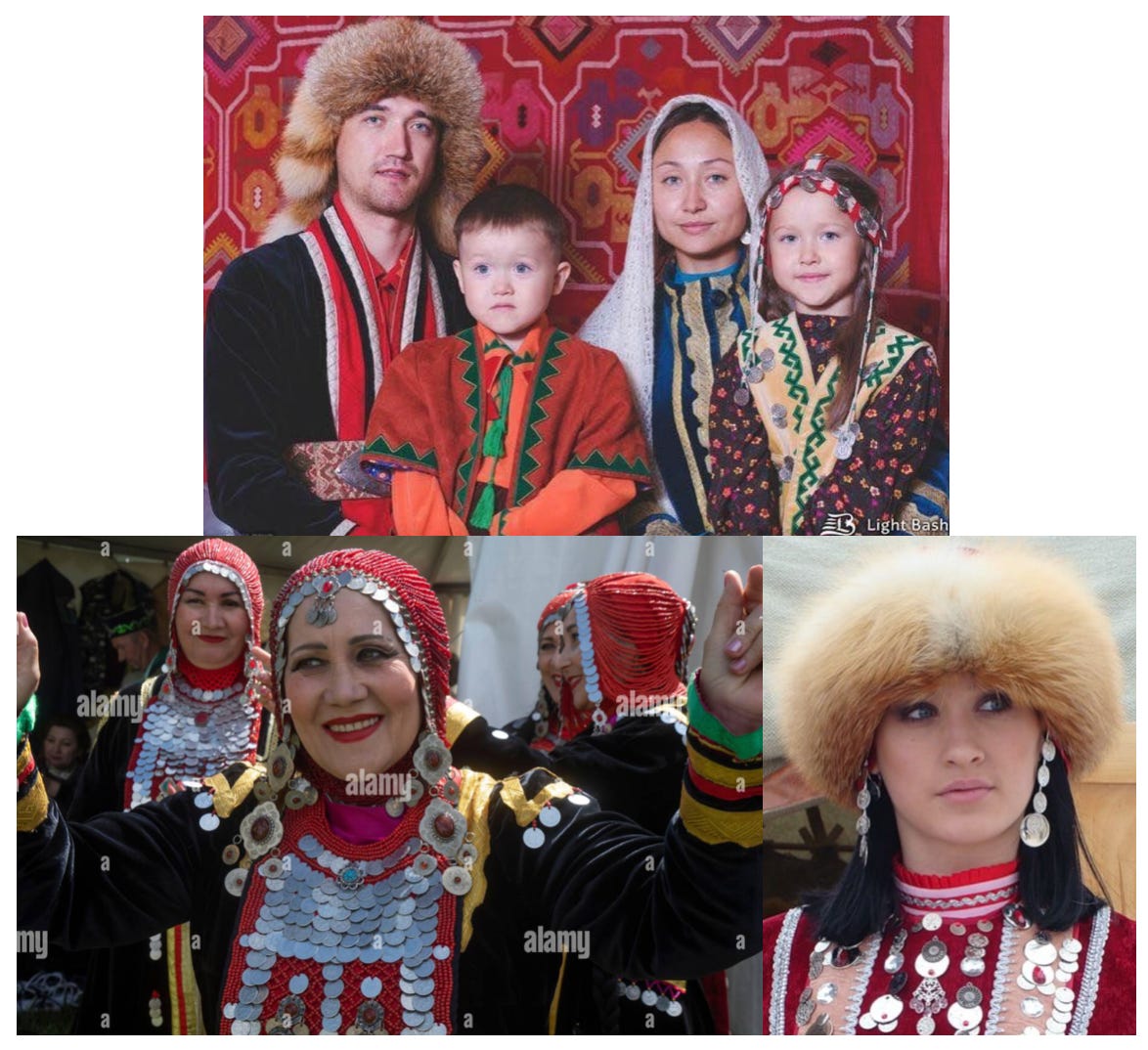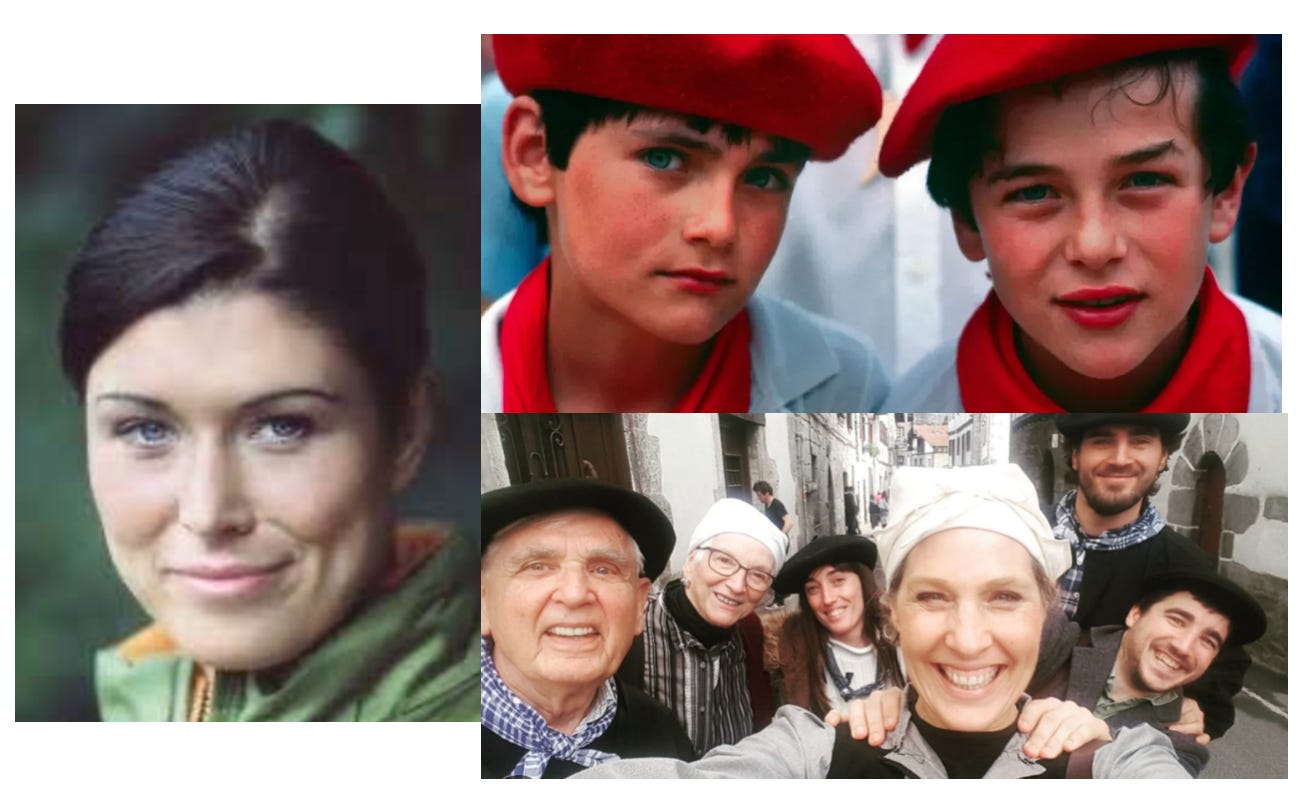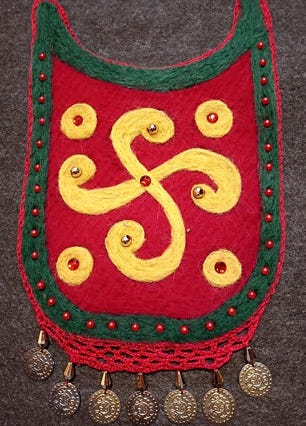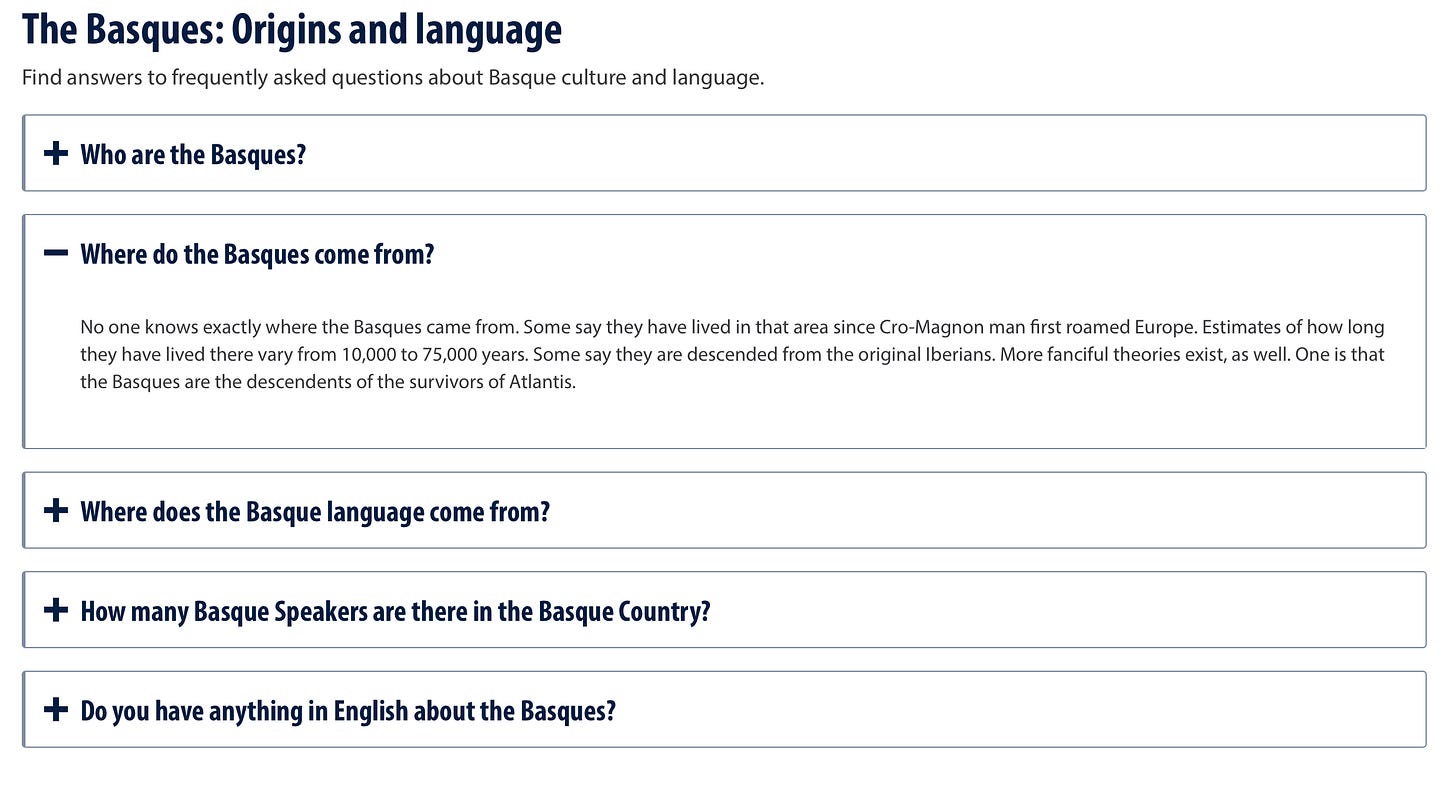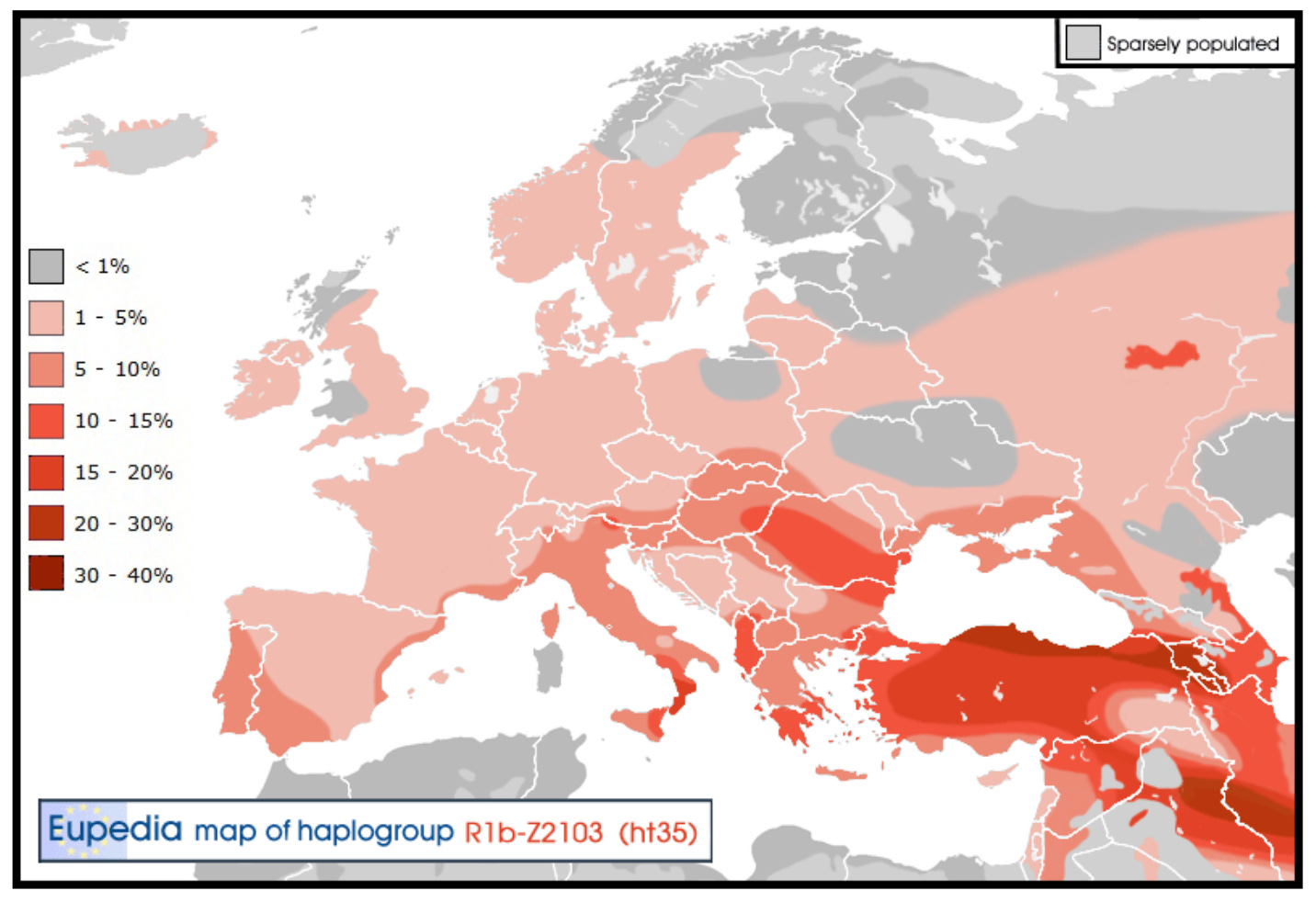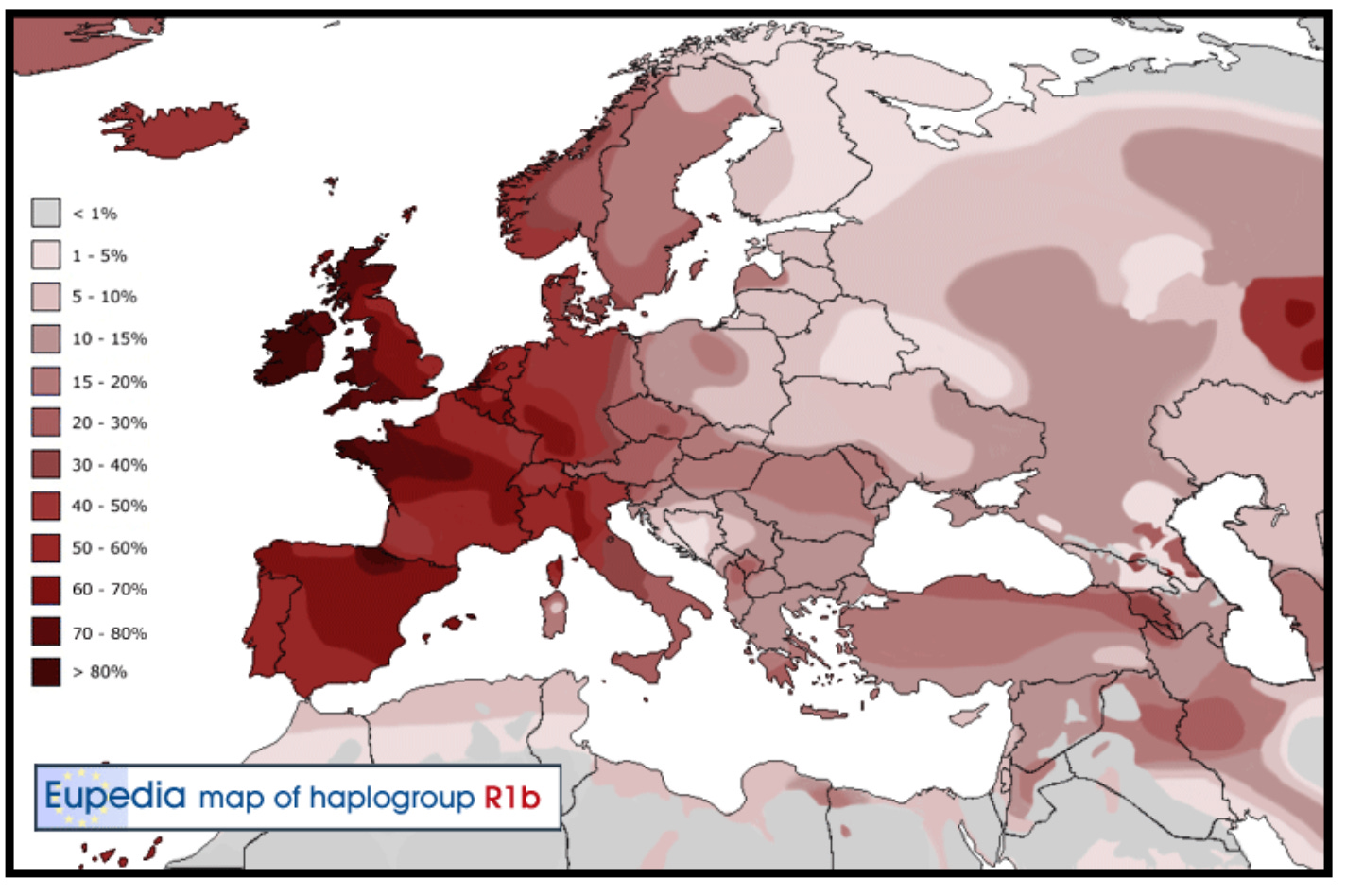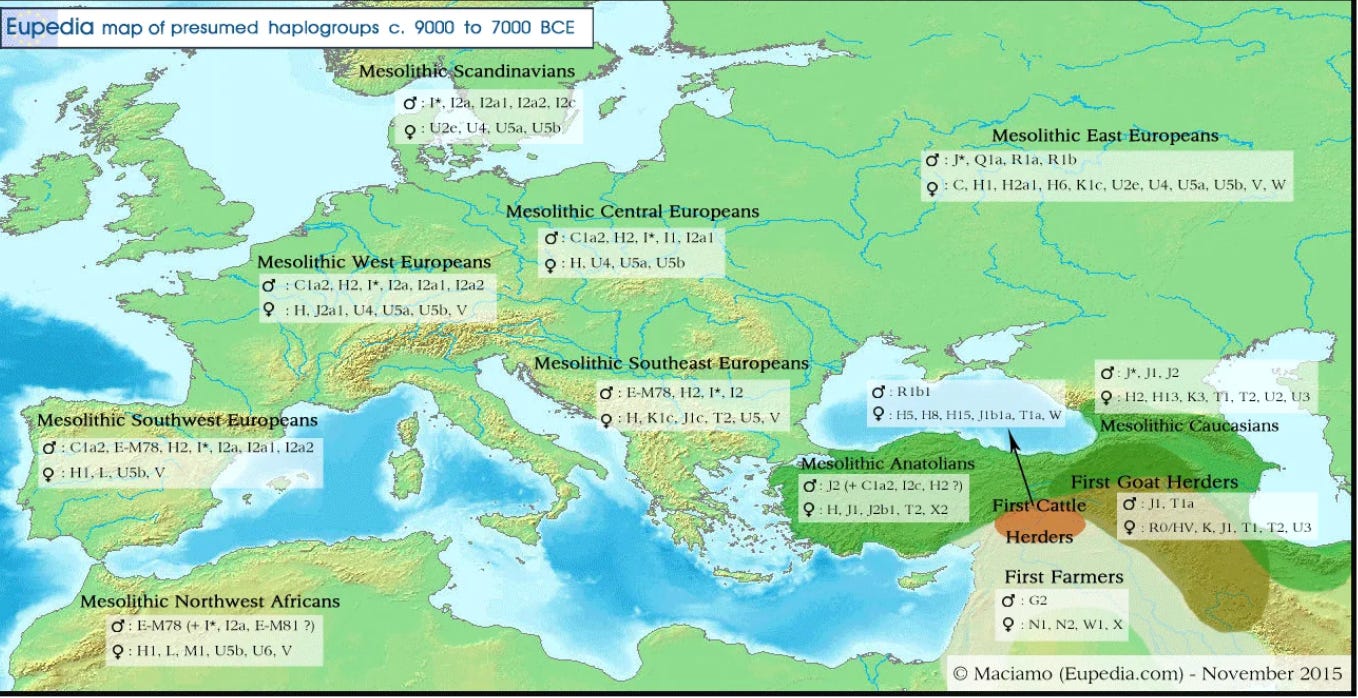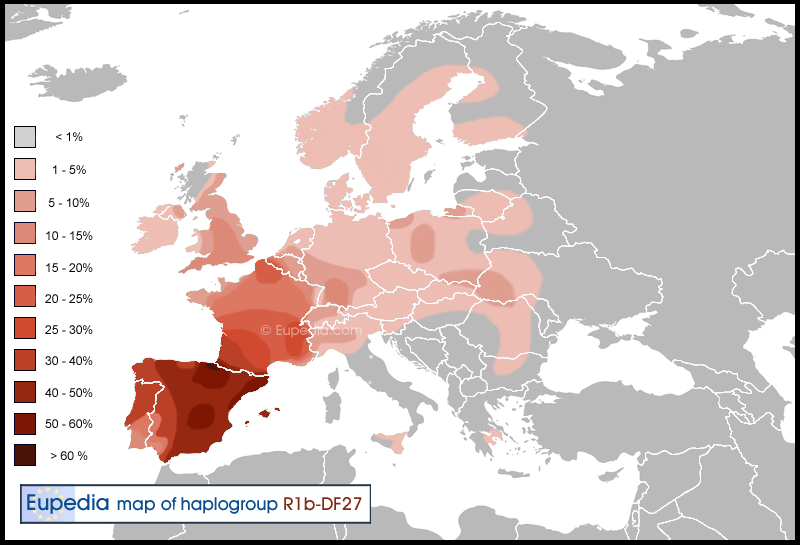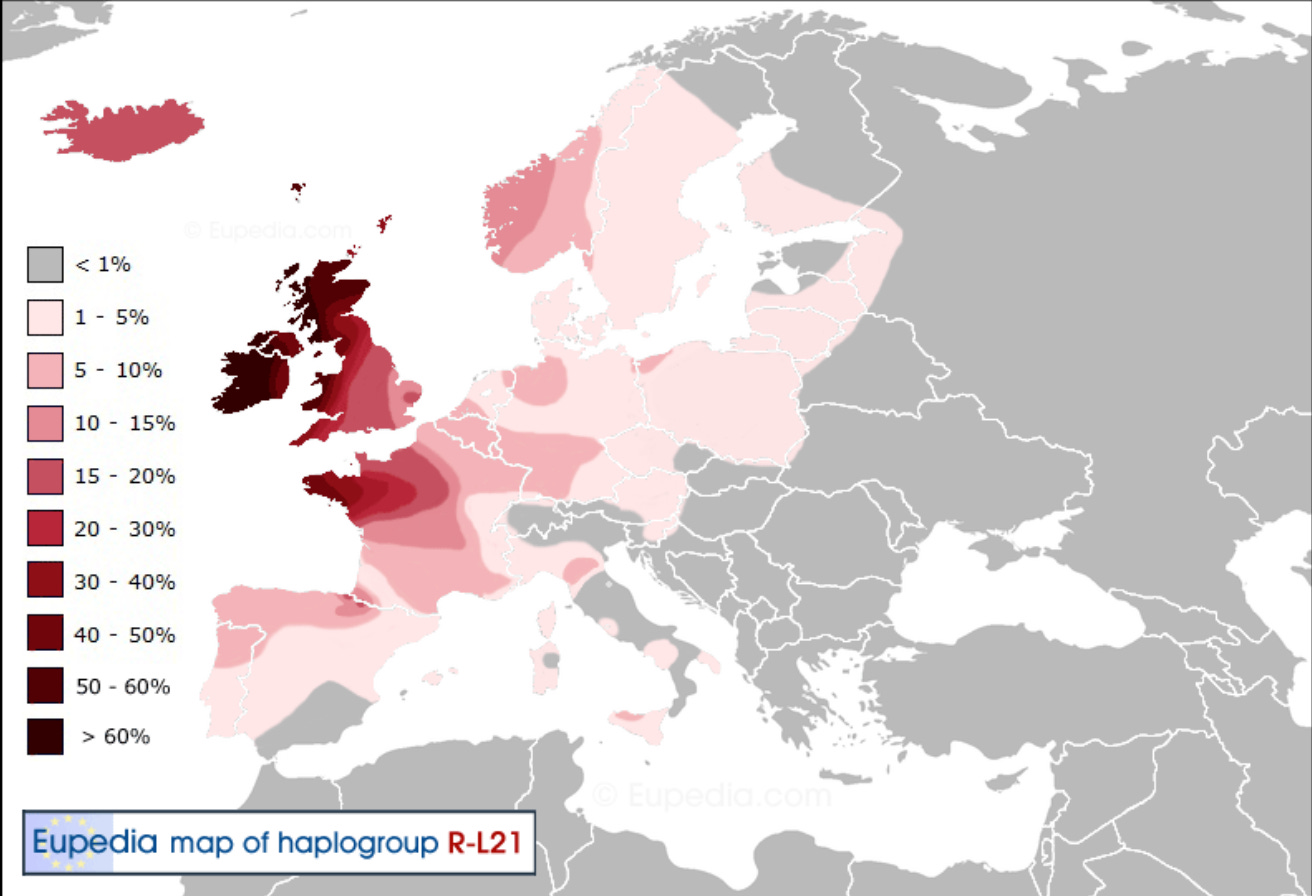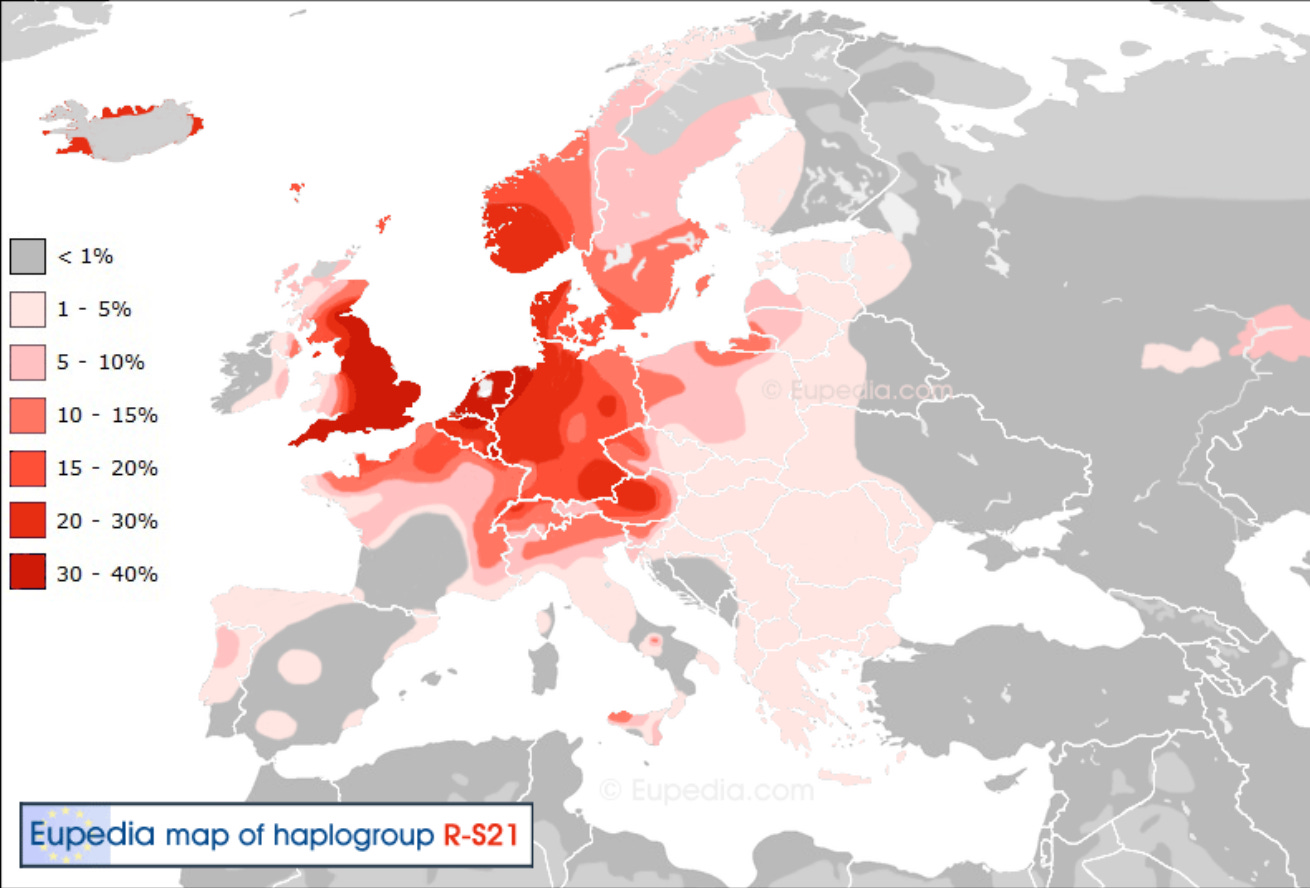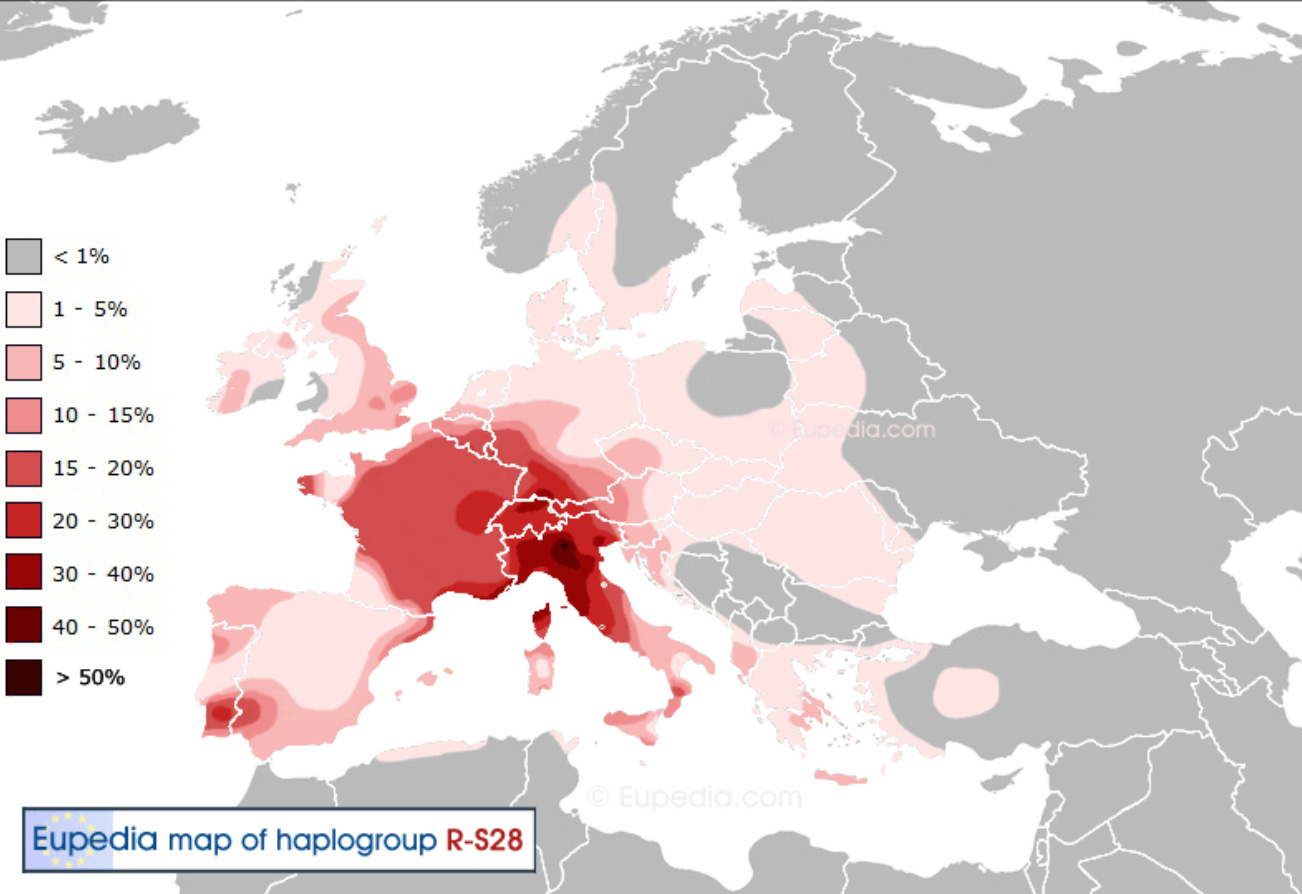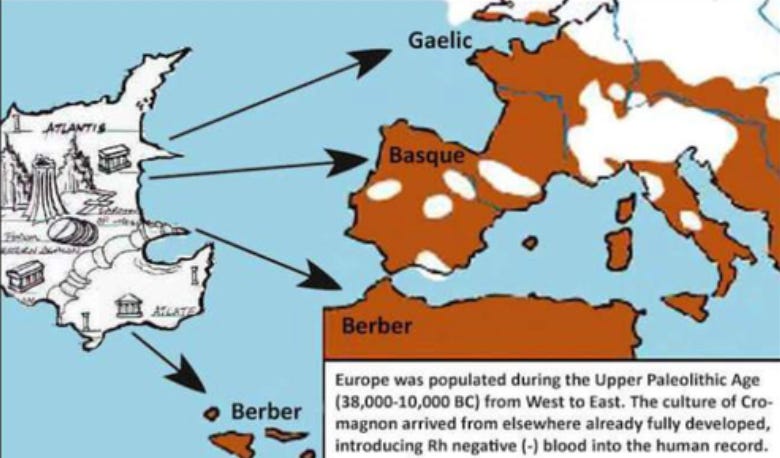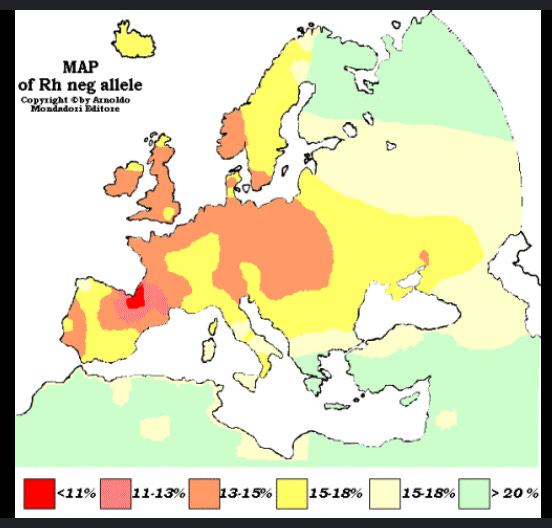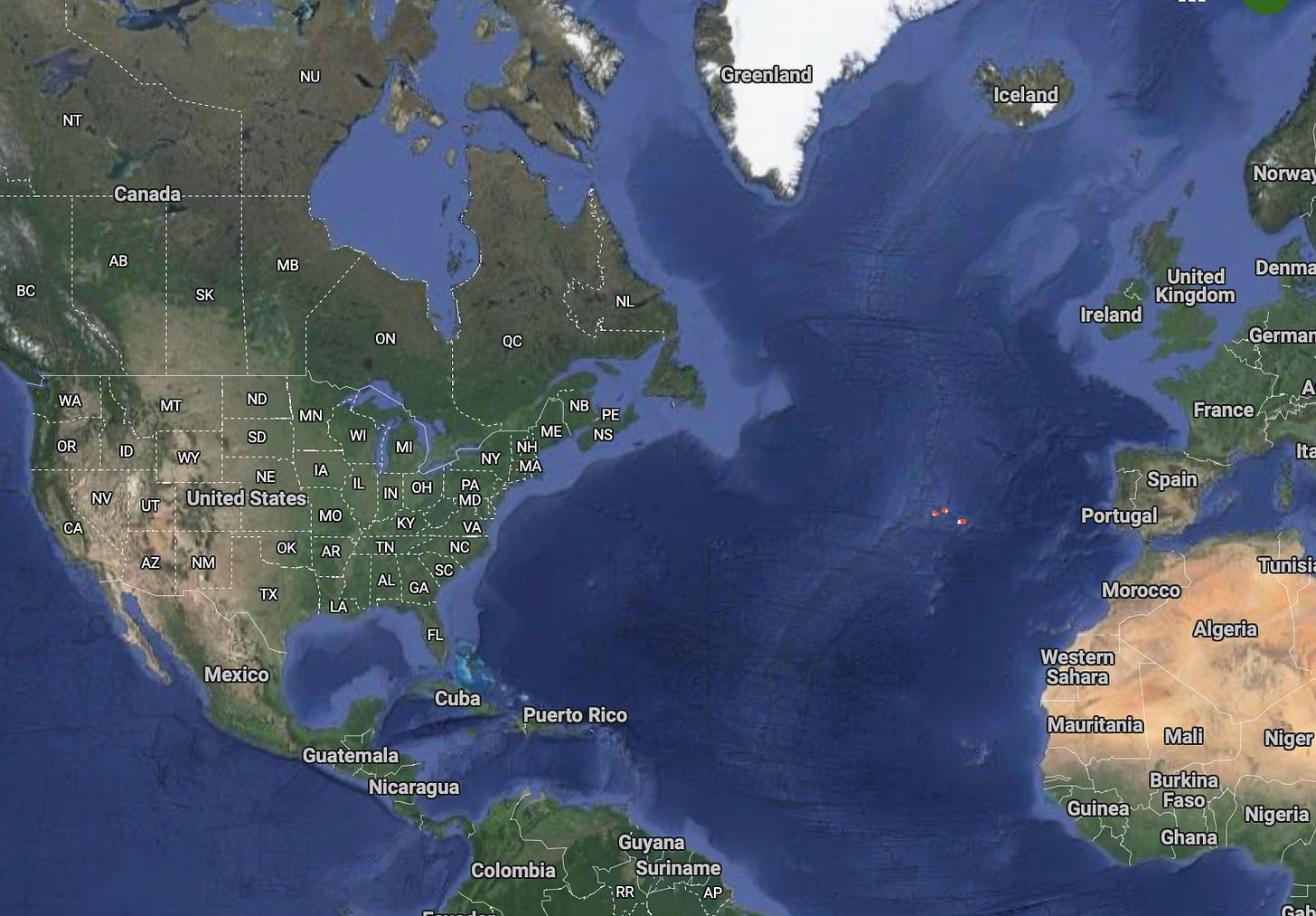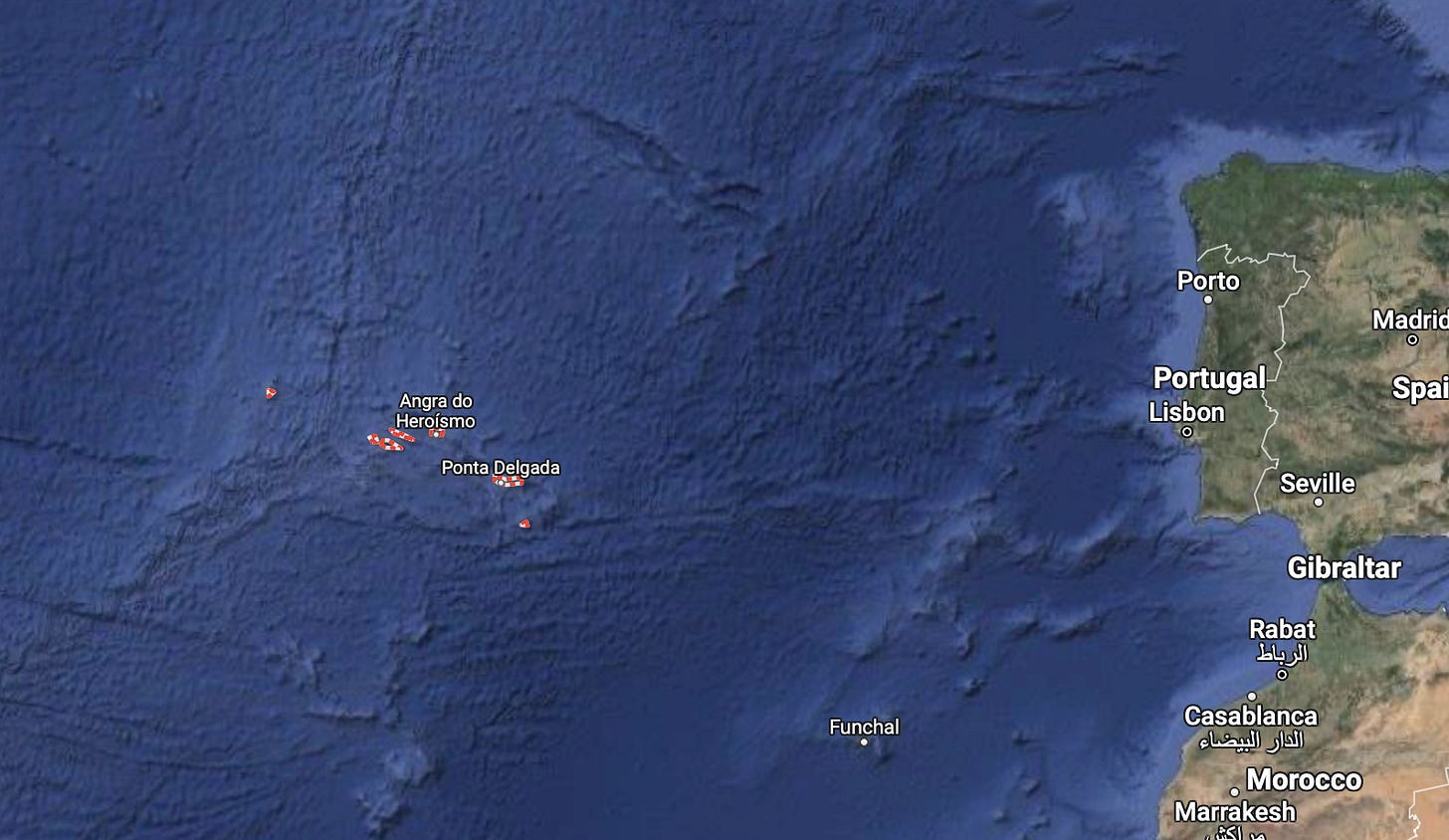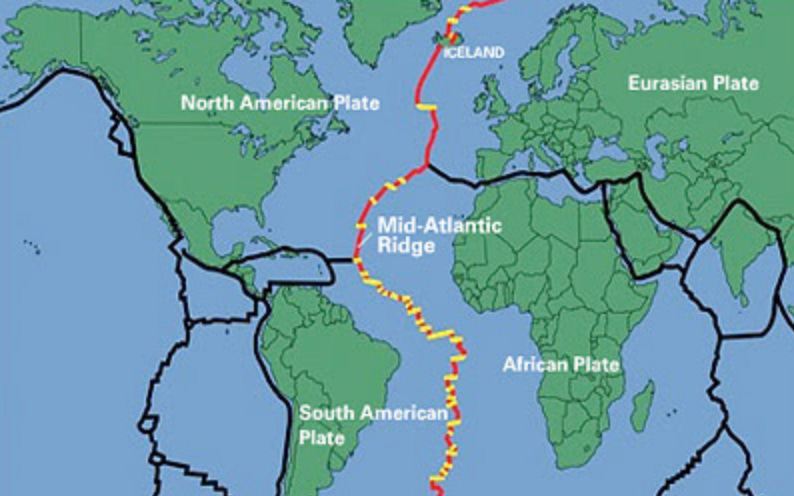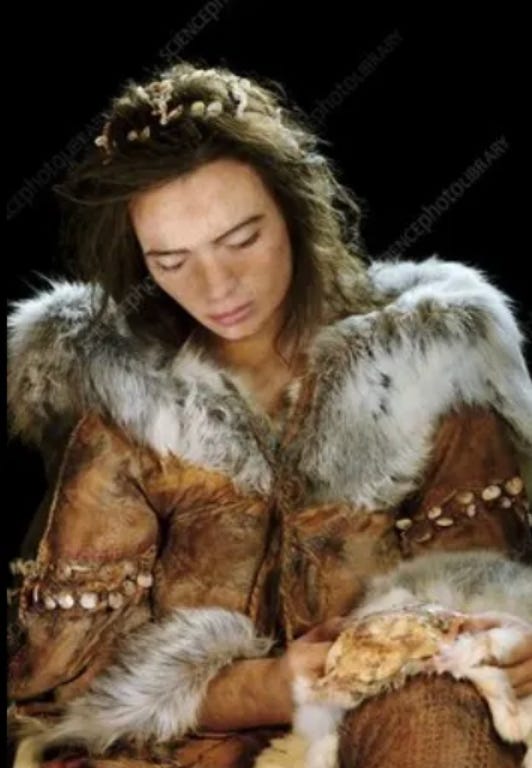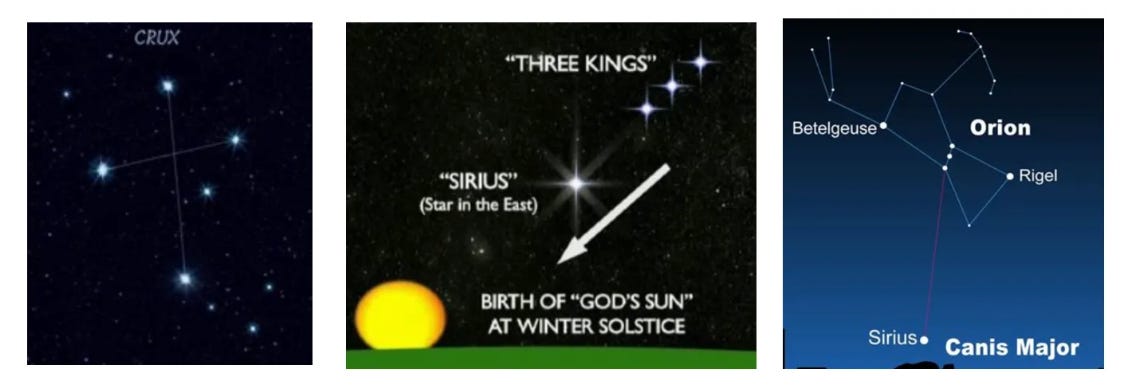Good morning or afternoon,
Happy weekend to you and I hope this message finds you well. The article you are about to read is an introduction to a personal project I had started a while back after coming across the details of J.R.R Tolkien’s writings about “Númenor” as featured in the posthumously published Unfinished Tales. The story is about a mighty kingdom which occupied a large island “to the west of Middle Earth” - also called also called Elenna-nórë or Westernesse - which reached greatness and which he claimed was based on Atlantis.[1]
Nothing against Tolkien’s creative skills but, after reading and researching the full description, it seemed too descriptive to be attributable to creativity alone. Considering Tolkien was both a professor and a fellow at Oxford, it seemed possible that he had access to information not available to the general public - thus potential information about the real-life Atlantis itself.
In short, after learning more about “Númenor,” I decided to see if the details could be verified by means of conducting an archeogenetic analysis around the times when it could have perished. But, before I get into my findings, let me give a brief overview of the details of his story as thoroughly yet succinctly as I can:
First, he claimed Atlantis (Númenor) was initially raised from the sea as a gift from the Valar to the Edain (or men) of Middle Earth who had stood with the Elves against Morgoth. Those men who had survived the wars left Middle Earth to live on Númenor and were transported in ships provided and navigated by the Elves. [2]
The island was shaped like a five-pointed star and had six main regions: the five promontories, named Andustar, Hyarnustar, Hyarrostar, Orrostar, and Forostar, and the central area, Mittalmar, which contained the capital city Armenelos [3]:
The men who went over were descendants of the Edain of Beleriand, which was a region located in the northwestern part of Middle Earth. They came from a few clans of people: 1) The People of Hador, with fair hair and blue eyes and the most populous on the island; 2) The People of Beor, with darker hair and grey eyes who were primarily settled in the western regions, especially Andustar [4]; 3) A smaller representation of the Folk of Haleth; and 4) A few families of the Druédain. [5]
Their common language was Adûnaic which was derived from the Hadorian Taliska. [6] Most of them knew elven Sindarin while the noble families knew the high-elven Quenyan. {7]
Most worshipped the One God, Eru Ilúvatar. [2]
While on the island, they developed their sea-faring and ship-building capabilities along with agricultural techniques and metallurgy. [8] Fish became a staple of their diet.[9]
After a period of extensive separation from Middle Earth and forgetting about their origins, they sailed eastward and reunited with Middle Earth and taught the natives their developments in agriculture and metallurgy. While they learned their languages were different, they find they share some words in common.[9]
The men of Middle Earth came to regard the Númenoreans as Sea Kings - even regarding them as gods.[9]
After some conflict over lumber-extraction, the Númenoreans’ view of the men of Middle-Earth changed. Rather than continue to be friends and teachers, they sought to set themselves above the native men of Middle-Earth, making them subjects and requiring tributes.[9]
The Númenoreans were soon divided into two camps: “The King’s Men” who strayed from their faith and “The Faithful” who maintained theirs. Some of the Númenoreans’ (“King’s Men”) former colonies were converted into vice-kingdoms, particularly along the southern coasts of Middle Earth. Their pride and cruelty continued and escalated for centuries.[9]
Due to Lord Sauron’s attacks upon Númenorean settlements and proclaiming to have dominion over Middle Earth, the Númenoreans challenged Sauron himself. Sauron submitted and was taken back to Númenor where he was imprisoned.[9]
Soon, Sauron went from prisoner to chief advisor to the king. He convinced the majority of Númenoreans to worship Morgoth (Melkor), represented by one eye. The “King’s Men” became more warlike and brutal per Sauron’s influence, making the men of Middle-Earth slaves. They engaged in human sacrifice (most often of the Faithful Númenoreans.)[9]
Sauron convinced Númenorean leadership to attack the Valar, claiming it would bring them Everlasting Life.[9]
Númenor was destroyed by Eru Ilúvatar by opening a massive chasm in the sea. Númenor was covered by massive waves and sunk into the ocean, leaving few survivors. [9]
Sauron died in this cataclysm, but his spirit returned to Mordor where he abandoned his previous tactics of secrecy and treachery in favor of ruling through terror and force.[9]
A minority of Númenoreans on the island survived this cataclysm. Otherwise, those Númenoreans who survived were living in the settlements of Middle-Earth and were among “The King’s Men.” They continued their loyalty to Sauron and became known as “Black Númenoreans.” One of the Black Númenoreans would become the “Mouth of Sauron.”[9]
We’ll stop here because this is more than enough to get started. In my research, I looked for the following:
A past geological event indelible and logistically reasonable enough to account for an island’s destruction (and perhaps one previous to this responsible for raising a landmass from the sea.)
Based on this event, any archeogenetic evidence supporting the return of a people or groups of people to an area where they may or may not have been prior to this destructive cataclysm. Archeogenetically, this would appear as the return of genetic haplogroups - most likely their subclades - to areas where they had not been previously present and whose appearance could not otherwise be explained. These subclades would appear sporadically at first, becoming more prominent over time as insinuated by Tolkien’s narrative. This would need to have been preceded by enough time for a people to both forget about their origins as well as develop linguistic differences and the advancements as described in Tolkien’s narrative.
Whether or not such archaeogentic findings reflected Tolkien’s physical description of the Atlanteans.
Any cultural changes such as the introduction of agriculture, metallurgy, ship-building, or otherwise which reflected Tolkien’s narrative.
We’ll start with the first. Based on Plato’s story about Atlantis, despite also being fictional, the island continent was destroyed around 9600 BCE. It turns out there was a massive cataclysm around this time which marked the top of the Holocene epoch. However, there are two major issues with this date: First, genetic trends worldwide are pretty consistent. The only potential exception is the appearance of the Magdalenian Culture in Western Europe, yet they appeared around 15000 BCE which is over 5,000 years before the cataclysm. This culture lasted until roughly 10000 BCE, or until the top of the Holocene:
Prior to this, the other two cultures present on the European continent were the Solutrean (20000-15000 BCE) and the Epigravettian (19000-10000 BCE), both of which emerged after the Last Glacial Maximum (LGM) which lasted between 24000-18000 BCE. The region is Solutrean occupied is shown in orange below; the Epigravettian, in magenta:
Prior to the LGM, the two industries present in Europe were the Gravettian (31000-19000 BCE) and the Aurignacian (41000-26000 BCE), both of which spanned the European continent:
However, the Magdalenians not only occupied a region similar to that of the Gravettians, they shared similar genetics and also with that of the Solutreans. Below are tables listing their paternal and maternal haplogroups:
The only appreciable difference is the presence of mtDNA H (which could have came across Gibraltar from the Iberomaurusian, which was present since the LGM), J (which could have migrated from the Levant, since it was present in the pre-Holocene Natufian and only present in the Magdalenian in trace amounts), T (also present in trace amounts, possibly from Scandinavia or Russia), and X (trace amounts as well, and most likely also from West Asia.) Otherwise, I is a descendant of N and HV descends from R.
Perhaps more importantly, the Magdalenians also shared the same Hunter-Gatherer lifestyle as its predecessors, meaning it did not engage in agriculture or metallurgy.
Following the geological record, the next two major incidents occurred at 8.2 kiloyears bp and 4.2 kiloyears bp, known as the 8.2-kiloyear event and the 4.2-kiloyear event., respectively. I won’t waste your time in describing how the 8.2-kikoyear event yielded nothing in terms of any genetic or cultural changes occurring beforehand; you’ll see that of yourself when you review the other information I’ve posted. Both the genetic and cultural makeup remained Hunter-Gatherer. However, those of you familiar with the area known as “Doggerland” may know that it was submerged around this time.
The 4.2-kiloyear event, on the other hand, does feature the cultural changes described in Tolkien’s narrative. Between 9600 BCE and 2200 BCE, we see both the advent of mass agriculture - starting with the Early European Farmer (EEF) migration from Anatolia into Europe starting during the late 7th millennium BCE (shortly after the 6.2-Kiloyear Event) as well Sumer starting around 5500 BCE - as well metallurgy with the Chalcolithic and Bronze Ages in Europe and elsewhere, starting around 5000 BCE and circa 3200 BCE, respectively.
Plus, since there was the cataclysm around 9600 BCE, this could have been the time when Atlantis was raised from the sea. So, it’s possible Atlantis went up at 9600 BCE and went down at 2200 BCE. This works with Tolkien’s story, especially since roughly 2,600 years would have gone by since the start of the Early European Farmer migration which, again, started during the 7th millennium - allowing enough time to develop the cultural and linguistic differences mentioned earlier.
(**Disclaimer: The directly following information will focus on the EEF/Chalcolithic periods and is admittedly a bit complicated but still worth reading. If you’d like to cut to the chase, scroll down to the “Bronze Age” section.***)
EARLY EUROPEAN FARMERS/CHALCOLITHIC:
As such, and if there was any Atlantean genetic influence, we would begin to see it around the time of the EEFs. And, we do:
I’ve only posted the Y-DNA tables since they’re sufficient enough (and less in number thus easier to keep track of.) But, if you’d like to see the complete tables for both haplogroup sets along with representations of other regions, you can click here: Y-DNA and here: mtDNA.
The cells marked in red are those pertaining to samples which I propose came from Atlantis. You’ll see that, between the start of the Holocene up until the advent of the Early European Farmers, Y-DNA haplogroups CT, C1a2, F, and I have been the only ones accounted for. All these correspond to Hunter-Gatherers and all these were present on the European continent prior to the 9600 BCE cataclysm. After the start of the EEF migration, we also see BT and H (which were present in Europe before the Holocene) as well as J2a (which was present in pre-Holocene Persia; I’ll go more into that in another article - believe me) and T (which was present in the Pre-Pottery Neolithic B of the Early Holocene Levant, also interesting, but we’ll put that aside for now.) We also see begin to see Y-DNA G2a rather prominently at this time and this was the predominant haplogroup carried by the EEFs (and, to a lesser extent, H) so we can see when they arrive.
And that’s the great thing about this ancient haplogroup information: after being chronologized and organized geographically, they can - and do - act like a sort of recording that can be rewound, similar to a video or audio recording, albeit the recording may be a bit garbled at times.
But I’d like to focus on R1b-V88 since, as you can see, it accompanies populations from both the EEF settlements as well as those during the Chalcolithic. Moreover, it appears a bit less frequently than the other haplogroups during this time, which echoes Tolkien’s version since the Atlanteans would not have been the predominant people during this time. (But wait until the Bronze Age…)
Below is a phylogenetic tree for Y-DNA R1b as well as a distribution map:
The areas of high frequency in Europe, as we will see, are overwhelmingly subclades of M269, which we’ll get to later. The only region where V88 is predominant is the Lake Chad region of Africa, which emulates the “colonies along the southern coasts of Middle Earth” per Tolkien’s story. (Take note that it’s still above the equator.)
In the first and third haplogroup tables, you’ll see L754 was present in the Epigravettian (specifically at Villabruna in Northern Italy) while M173 (“R1,” parent of M343 or “R1b”) was present at Aven des Iboussières à Malataverne in France, and both preceded the Holocene. As you can see from the tree, both could have given rise to V88, but…
… they disappear (or at least haven’t been detected) throughout the Early Holocene up to the EEFs. Could V88 have come from somewhere else?
I lumped Italy with the Balkans and Eastern Europe since this is where the Epigravettian was before the Holocene. But you’ll see that V88 was present in Early Holocene Ukraine (Vasil’evka, c.9000-7058) as well as the Balkan Iron Gates (c.8835-6500.) It could have also been present amongst the pre-Holocene Eastern Hunter-Gatherers since they carried L278 and could have emerged from it (but it couldn’t have emerged from their M73.) Yet, even with this, V88’s first appearance comes almost a millennium after the start of the Holocene (c.8835 BCE), so it could have come from Atlantis as well.
But…the earliest known sample of V88 found in Western Europe was at Els Trocs…in the Spanish Pyrenees…dating circa 5130 BCE or around the start of the Chalcolithic. This site was also the first found to carry mtDNA V in Western Europe, also dating to around the same time:
As shown above, the oldest V sample known thus far is the Starčevo Culture’s in the Balkans, clocking in at c.5550 BCE. The timing is not only during the EEF migration, the culture itself is an EEF industry as it originated the spread of a Neolithic package of peoples (including Hunter-Gatherer Y-DNA C1a2, I, I2 and even F and H carriers as well as EEF G2a carriers) alongside innovations in agriculture and ceramics into Europe.
To be fair, subsequent samples of V found shortly thereafter were amongst Linear Pottery Cultures in Germany, France, and Hungary, as shown in the haplogroup tables above. But this is practically simultaneous - well, more than fifty years later.
But it gets more strange: mtDNA V is a descendant of mtDNA HV0 which itself is a subclade of mtDNA HV, which descended from mtDNA R0, a descendant of R. As you can see here or above, both mtDNA HV and R were present in the Paleolithic Magdalenian (15000-10000 BCE) and Aurignacian Cultures (41000-26000 BCE), respectively.
However, after this, HV isn’t seen again in Central and Western Europe until the agricultural Linear Pottery Cultures and Els Trocs alongside V (and HV0) - and both are present at contemporaneous EEF Starčevo. Moreover, after mtDNA R’s last appearance circa 7000 BCE in Mesolithic Iberia, we don’t see it again in Western Europe until the Bronze Age Corded Ware and Bell Beaker Cultures (both carriers of mtDNA R1a.) Otherwise, we see subclade R01a amongst the Bronze Age Yamnaya c.2955 and HV and HV0 amongst the Cucuteni-Trypillian which, like Starčevo, was also agricultural!
While HV’s sibling subclade R0a was found in pre-Holocene, North African Iberomaurusian samples, it was R0a1a and R0a2c - which still could not have given rise to the V found in the Pyrenees at Els Crocs!
We’ll get back to R1b-V88, but already we’ve found a disappearing and reappearing subclade - mtDNA HV - and its newly introduced descendants, HV0 and V, as well as the appearance of descendants of the disappeared mtDNA R and U8a, R1a and U8a1, respectively - and they reappear well into the agricultural period.
The appearance of mtDNA V in the Pyrenees (as well as the Starčevo Culture along with its V6) was the result of one of two possibilities:
First, the mtDNA V found at Els Trocs (c.5315) as well as Starčevo (c.6000-5300 BCE) would have needed to have descended from the mtDNA HV found in Early Holocene Lepenski Vir (9500/7200-5500 BCE) in Serbia, with the child V being carried westward by means of the EEF (or another westward?) migration to be simultaneously distributed throughout Europe - including the Pyrenees, Western continental Europe, Central Europe, and the Balkans within 400 years from V’s first appearance in Serbia around 5550 BCE, which would have required the accompaniment of the R1b-V88 known to have been located in Iron Gates Serbia (8240-5900 BCE) or Deriivka, Ukraine (7040-4548 BCE) since V88 was also found at Els Trocs.
Now, this is possible, considering the Cardium Pottery - also known as the Cardial Ware - Culture spanned this region:
(However, as we will see and what will be the big punchline to all this - this will not account for the R1b subclades to be discussed later - DF27, L21, S21/U107, and S28/152 - appearing in Western Europe later on during the middle Bronze Age nor in the R1b-Z2103-carrying Yamnaya, which is around the time the Bronze Age was kickstarted circa 3700 BCE in the Caucasus, as none of them could have descended from V88.)
Yet, with this, there’s one thing to keep in mind, which is the previously mentioned high density of R1b-V88 around Lake Chad.
Now, it’s possible (and, if you ask me, very probable) that the 4.2 BP Kiloyear Event is what caused the desertification of Northern Africa, giving rise to the Sahara Desert and decimating the previously fertile regions of Atlantean-inspired Ancient Egypt, including the removal of the limestone layer from the pyramids:
So, either R1b-V88 travelled westward across Continental Europe having originated in the Balkans and or Eastern Europe (which is feasible, as this area comprised the Pre-Holocene Epigravettian which carried R1b-L754 which was the parent of L761 which was the parent of V88, all of which were confirmed to be in the Balkans or Ukraine during the Mesolithic) in addition to migrating across Northern Africa prior to its desertification, leaving the Chadic area as a genetic relic after the cataclysm and the area’s desertification or V88 was brought over to Atlantis (where the Azores are today) and subsequently brought over to the Lake Chad region and to other parts, such as the Pyrenees.
I’m prone to believe the former, believe it or not, but this might be contingent on whether or not the spike of R1b-V88 found around the Lake Chad region was accompanied by a high frequency of the Rh Negative blood type. Whether or not this is the case, I have (found) nothing concrete to support this. I’ve found some claims that it does, but I see no verifiable data with any documentation I can reference. I have the map below…
…. as well as this list (also below) from rhesusnegative.net [3], but it has information for only two of the four countries bordering the region (Cameroon and Nigeria, shown below; nothing for Chad or Niger.) Moreover, I have no idea where this data came from:
Even from this, as you can see, and especially with the high percentage of R1b found around Lake Chad, the map and the table do not indicate a high frequency of the Rh Negative blood type within countries bordering this region, despite some claims (and claims alone) with no verifiable citation(s) and thus evidence. As far as Cameroon and Nigeria are concerned, we have 3.1% and 3.0%, respectively which, as you can see, are quite low (even though we can’t substantiate this.)
However, it is possible that this V88 was brought over during the first wave - before the emergence of the Rh Negative Blood type - since its first confirmed appearance (c.5130 BCE at Els Trocs) predates that of the other subclades of R1b (DF27, L21, S21/U106, and S28/U152, no earlier than c.3000 BCE in the Corded Ware) which are known to correspond to a high frequency (≥ 20%) of the Rh Negative blood type by roughly 2,100 years.
Hmm…
Yet, another thing we do have is the following information presented in a study published by Nature.com regarding the trans-Saharan spread of R1b-V88:
“About one third of the African R-V88 chromosomes carried mutation V69, which was not observed outside Africa. The large majority of R1b chromosomes from western Eurasia carried, as expected, the M269 mutation; only five R-V88 chromosomes were observed, three of which carried distinctive mutations (M18, V35, and V7).” [12]
So, while the presence of an African-specific R1b-V88 mutation alludes to the potential that this gene pool could have been introduced into the area by means of a separate migration (ie., one which may have come from Atlantis and not across the Mediterranean alongside a potential westward genetic migration from the Balkans to the Pyrenees), it does not prove it, as it’s not impossible that a particular continent will contain a continental-specific subclade of a certain haplogroup. An example of this is Y-DNA E1b’s subclade V13 which appears to have arisen on the Balkan penninsula unlike other subclades of E1b which are clearly North African in nature:
Yet, referring back to the study published on Nature.com, note that the study found that Europe yielded samples with predominantly R1b-M269 subclades (primarily (DF27, L21, S21/U106, and S28/U152) and very few of V88. Those few which had been revealed represented regional specific subclades - M18, V35, and V7 - in contrast with the V69 found in Africa. Again, M269 could not have descended from V88. A frequency map of R1b-M269 (including the aforementioned subclades) is below:
All this tracing of R1b-V88 to find out where the hell the mtDNA V found in the Pyrenees around 5130 BCE came from…
But I haven’t given up. To see whether or not the V88 found in Africa (V69) could have come from the same (potential) migration as the ancient samples of V88 found in the Pyrenees (at Els Trocs and Cueva de Chaves) - which was R-FGC21027 or theV88 (M18, V35, and V7) found in trace amounts in Western Europe per the publication from Nature.com - I traced all of them back to their original R1b-V88 to see if this would shed any light. Their trees are below. You’ll see two dates following each subclade: the first corresponds to the date the subclade supposedly originated as listed on FamilyTreeDNA.com; the second, the date when the most recent common ancestor bearing this subclade was born, also from the same site. To give you an idea:
If such information was not available on that website, the source it was derived from is referenced):
Well, this is interesting, if not irritating: The African subclade of V88 - V69 - and two of the European V88 subclades - V35 and V7 - share a common ancestor with the samples found in the Pyrenees dating to c.5130 - namely, R-FGC21027. However, how the hell could it have “branched off from the rest of humankind” during the early Mesolithic (8800 BCE) with its most recent ancestor being born during the Neolithic more than 3,000 years later circa 5600 BCE? With no mutations in between?
This peculiar dichotomy extends to the other European branch - M18 - whose common ancestor shared with the samples found in the Late Neolithic Pyrenees is R-PF6287 - dating back before the Holocene (c. 11000 BCE/9800 BCE ???) Plus - PLUS - M18’s direct predecessor - R-PF6350 - displays the same weird “Top o’ the Holocene”/Late Neolithic dichotomy as far as when it “first branched off humankind” (c. 9800 BCE) versus the supposed birth year of the most recent ancestor (c. 4900 BCE) who carried it as R-FGC21027 itself??? Which first appears during the Late Neolithic???
Do you have a headache now? I do. I definitely do. And I’m ready for a Choco del Taco as a comfort food for the nothing-burger I’ve been chewing for hours now - and I’m not even on a diet!
And what about mtDNA V!? “V” for “Victory???” Not this time!!! I’m ready to “mt” a bottle of Kamchatka right about now…
Seriously, how is it possible that one of these subclades could have originated before or just after the start of the Holocene only to be first accounted for almost 5,000 years later while, for the other, it’s a span of nearly 3,000 years?
The other subclades don’t behave this way.
Also, before I leave this, take a look at the subclade which directly preceded V35, R-Z30238. It supposedly branched off around 5300 BCE, but the estimated birth year of its most recent common ancestor is 1950 BCE?
I’ll cut the crap now and call it like I see it: Between the year these subclades supposedly branched off their their parent and the year their most recent common ancestor was born there were additional intermediary subclades which have not been accounted for - quite possibly due to coming to and going from Atlantis or we can’t account for them because of the desertified Sahara.
Or can we? I believe we can reasonally expect that the dates the subclades “broke off from the rest of mankind” are based on the most recent samples known of its supposed predecessor (it certainly looks that way at least) while the birth year of the “most recent common ancestor” is based on the subclade’s earliest known sample.
If that’s the case, and considering the time of supposed origin for R-FGC21027 (and it’s probably an earlier ssubclade not accounted for) - 8800 BCE (and we can probably put it before, since R-FGC21056’s successor, whatever that was, probably originated before the most recent sample of R-FGC21056 was found) - way before agriculture either way…
Well… in short… the first missing link in the chain after the R-FGC21056 (which most likely was not R-FGC21027) disappeared, at the very latest, 8800 BCE- way before agriculture in Europe. Instead, it arose on Atlantis.
…
Thus, the second possibility (after that dreadfully long tangent) is that these weird subclades - R-PF6350 and R-FGC21027 and their precursors up to R-FGC21056 - took hiatuses lasting a few millennia on some third-party satellite location which hasn’t been accounted for (aka, Atlantis) before being brought back over along with mtDNAs HV and V:
As for M18, it would have been whatever subclades actually followed PF6362 since there appears to be subclades not accounted for between PF6362 and PF6350 - the first of which disappeared not too long after 9800 BCE - most likely after the 9600 BCE cataclysm - because it arose elsewhere before PF6350 was introduced to Europe around 4900 BCE, or during the Chalcolithic.
To put it bluntly, it appears R-FGC21056 was brought over to Atlantis sometime after 9600 BCE then, after some additional mutations which took place on Atlantis that we can’t account for, was brought back over circa 5600 BCE as R-FGC21027 to both Europe (where it mutated into subclades V35 and V7) and Africa (where it mutated into V69.)
As for M18, it appears to be a different strain, with R-PF6362 being taken to Atlantis then, after additional mutations, was reintroduced into Europe as R-PF6350 circa 4900 BCE, eventually mutating into M18.
Dayum.
You know what? Let’s move onto the Bronze Age.
BRONZE AGE:
There are two parts to this: The first relates to the top of the Bronze Age, starting with the first Bronze Age Culture, the Maykop and their neighbor, the Yamnaya, and their probable offshoot, the Bashkirs. The second part focuses on the Bronze Age cultures located on continental Europe and the British Isles which existed no more than a millennium before the 4.2 BP Kiloyear Event.
Part I: The Yamnaya/Maykop
As just mentioned, the Maykop Culture (c.3700-3000 BCE) is known as the first Bronze Age Culture. It’s also the first culture to introduce Y-DNA R1b into the Caucasus region, carrying V1636:
I’ve created the tree below to show where V1636 emerges.
As you can see, it could not have descended from M269 (we’ll see why this is important in Part II) or V88, and this is fine since it doesn’t appear to have come from Atlantis. Instead, it appears to have come from Kvalynsk (c.3806) located directly above the Caucasus in the Volga region:
The Yamnaya (or Yamna) Culture, believed to be an offshoot of the Maykop, did carry R1b, but it was virtually exclusively the subclade Z2103 - which, as you can see in the tree above - could not have descended from V1636. This (I assume) is the reason it’s speculated the Maykop were carriers of R1b-L23. If not, where could it have come from? The Chalcolithic Balkans? Smyadovo? (c.4784-3651 Yet this could have from Atlantis as well, considering they - and their M269 - appeared during the Chalcolithic. And their only known reasonable donor would had to have been the Baltic Narva Culture (c.5500-2900), yet they carried P297 and M73. M73, as shown in the tree above, could not have given rise to Z2103 or M269 and, while P297 could have, we don’t see intermediary clades L23 in between logistically or geographically. Plus, this culture existed during the Chalcolithic as well (and thus could have been influence by Atlantis, but I doubt this is likely since P297 appeared to have mutated in the direction of M73.)
The Chalcolithic Balkans (or the Yamnaya’s) only other known potential donor would have been the Volga region’s Samara Culture (c.5544 BCE) which carried P297.
Basically, prior to the Chalcolithic Balkans between c. 4784-3651 BCE, we see only P297, L761, and L794 as well as M73 and V88 in the Balkans, Eastern Europe, and the Volga - and the latter two subclades could not have given rise to M269 and thus the Yamnaya’s Z2103. Below is the region of the Yamnaya Culture:
But here’s where things get strange.
If you refer back to the first map of Y-DNA R1b, you’ll see a high-density area just east of the Volga region and right above Khazakhstan:
This area corresponds to the Bashkir population, which not only has a high frequency of R1b….but also a high frequency of Z2103 in particular:
Trofimova et al. (2015) found a surprising high frequency of R1b-L23 (Z2105/2103) among the peoples of the Idel-Ural. 21 out of 58 (36.2%) of Burzyansky District Bashkirs, 11 out of 52 (21.2%) of Udmurts, 4 out of 50 (8%) of Komi, 4 out of 59 (6.8%) of Mordvins, 2 out of 53 (3.8%) of Besermyan and 1 out of 43 (2.3%) of Chuvash were R1b-L23 (Z2105/2103.)
The Bashkirs, like Tolkien’s description of the People of Beor, also seem to have members with dark hair and grey eyes:
So do the Basque people:
And while the curved swastika called the Lauburu is known to be a traditional symbol of the Basque People:
We see the same symbol in the Bashkir’s culture:
Their names are somewhat similar: “Basque” versus “Bashkir” and the Basques themselves acknowledge the speculation that they have Atlantean roots:
I can tell you right now: The Basques definitely are (some of) the descendants of the survivors of Atlantis. What I’m asserting here, however, is these two peoples share a common - although very distant - lineage, and it’s the one Tolkien fictionalized as the People of Beor, whom he described as not only having darker hair and grey eyes, but also great at defense but not aggressive. The Bashkirs represent an Atlantean lineage which was the first to introduce the use of Bronze to the Old(er) World. They brought over with them M269 and L23 to the Balkans during the Chalcolithic (PF7562 probably emerged there) and the Caucasus starting the Bronze Age with Z2103 developing in the latter to be spread later to regions in the Volga and, as we shall see, a bit westward:
Oh - almost forgot: the Basques have a long history of building boats:
Part II: BRONZE AGE EUROPE
Isn’t that crazy? But now we know the “People of Beor” were carriers of R1b - specifically of M269 which appears to have arisen on Atlantis. Here’s a close up of the R1b distribution in Europe:
As we’re about to see, virtually ALL of this R1b in Western Europe entered during the Bronze Age. Per Tolkien’s narrative, we would see a gradual increase in the archaeogenetic imprint the Atlanteans left before the island’s demise which, again, is speculated to have been circa 2200 BCE per the 4.2 Kiloyear Event.
As mentioned at the beginning of this article, researching archaeogenetics to corroborate Tolkien’s narrative involved looking for any haplogroups or subclades of haplogroups not seen in a particular region previously. As far as the representation of R1b in the map above, you’re about to find out that virtually all of it cannot be accounted for.
Archaeogeneticists are in one of two camps in terms of explaining the overwhelming presence of R1b in Western Europe. The first claims that it was brought over by Western Steppe Herders (WSHs), namely the Yamnaya, in the following manner:
While it’s true that the WSHs migrated westward, they didn’t get much farther than Central Europe. Moreover, the R1b they carried was almost exclusively Z2103, which the subclades found in Western Europe could not have branched off from.
The second camp acknowledges it’s inexplicable, as evident in the following quote from Nature.com:
“for unknown reasons, the replacement of Copper Age Western European Y chromosomes made up mainly of haplogroups I2, G2a, and H [I2 was carried by Western Hunter-Gatherers; G2a and H were carried by Early European Farmers] by R1b Bronze Age chromosomes was more dramatic in Iberia.”
Prior to the EEFs, Europe looked something like this:
You’ll see that, in Western Europe, the Y-DNAs present were C1a2, H2, I, I1, and I2 - from the Hunter-Gatherers - to be joined later by EEF G2a.
Now, you’re welcome now to refer back to the Y-DNA tables posted earlier or you can see them here. If you locate the Corded Ware Culture around 3000 BCE, you’ll see subclades of R1b which had not been present on the European continent previously (with the exception of Z2103.) Moreover, you’ll notice the presence of other haplogroups - especially G2a - diminish as time goes on.
In short, they’re all subclades of M269 - brand new to Western Europe and the frequencies in these areas are astronomical:
It peaks at the national level in Wales at a rate of 92%, at 82% in Ireland, 70% in Scotland, 68% in Spain, 60% in France (76% in Normandy), about 60% in Portugal [7], 50% in Germany, 50% in the Netherlands, 47% in Italy [8], 45% in Eastern England and 42% in Iceland. R-M269 reaches levels as high as 95% in parts of Ireland and reaches a high frequency among the Bashkirs of the Perm region (84.0%)[9] It is particularly high amongst the Basques at 91%. [13]
Looking again at the Y-DNA tables, you’ll see a large spike in the number of R1b subclades found in the Bell Beaker Culture. This is because its dates - from c.2800-1800 BCE - flank the demise of Atlantis.
Four main subclades compromise this new population. They are: DF27, L21, S21/U106, and S28/U152:
Y-DNA R-L21 is believed to have originated c.2600 BCE; R1b-DF27, c.2200 BCE; R1b-S21/U106, c.3500-2000 BCE; and R1b-S28/U152, c.2800-1800 BCE. Take note of the dates of origin for each and their correspondence to the speculated flood date of 2200 BCE. They either coincide with.the 2200 BCE date - like DF27, prevalent amongst the Basques - or precede it.
The earliest to arise (more like, “arrive”) is S21/U106, which occupies an area with populations of people with fair hair and blue eyes - the People of Hador. These would become the “Fallen Angles” featured in the widely redacted Book of Enoch - when, really, it’s “Fallen Anglos.” They are 100% human and always have been.
S28/U152 might be the same stock as the People of Beor, since DF27 and S28/U152 share the same direct ancestor, ZZ11, and the Bashkirs do not. Instead, Their historical M269/L23 mutated into Z2103 elsewhere.
But who are the “Folk of Haleth?” At first, I speculated that they were the Ashkenazi - since S21/U106 would be “Nazi.” Y-DNA J1-P58 has a subclade called “Chromosome Aaron” because it’s believed to have descended from the biblical Aaron since it’s found today amongst Jewish males with the surname “Cohen” which means “Priest.” And, quite frankly, this appears to be accurate.
There’s also the flood myth of the Old Testament which led people like former Congressman Ignatius Donnelly, author of Atlantis: The Antediluvian World (whom I share both a birthday and birthplace with - go figure) to believe Eden was the same as Atlantis. I thought he was correct at first, but now I’m not so sure.
The Flood “Myth” was also reflected in other records, such as the 18th century BCE Akkadian epic Atra-Hasis in which the rebellious god Enki secretly warns his priest “Athrahasis” of the impending catastrophe. In this account, the Sumerian “gods” of Mesopotamia planned to turn the region into a fertile garden landscape, with the hard labor leading to a revolt of the ‘lower’ gods and, to pacify it, created the first pair of humans to do the work in place of the gods. After a few thousand years, the humans multiplied to such an extent that they disturbed the gods. Because of this, Enlil, the highest of all gods, decided to unleash a mighty flood to wipe out humanity. Athrahasis and his family survived after Enki gives him instruction for building a boat.
The Sumerian Epic of Gilgamesh (the earliest records of which date from c. 2100–1800 BCE) tells a similar story. Here, the “great gods" of Mesopotamia (who were a actually men) - Anu, Enlil, Ninurta, Ennugi, and Ea - swear an oath of secrecy about their plans to cause the flood, yet Ea divulges this plan to Utnapishtim through a reed wall of a reed house, instructing Utnapishtim to build a boat in order to survive. Utnapishtim does so, subsequently loading it with the craftsmen who helped him along with his family, “all the living beings that he had,” and all his silver and gold. The “god” Erragal then pulled out the mooring poles causing the dikes to burst, subsequently causing the people to be destroyed. As described by Ishtar, the mistress of the gods, they “filled the sea like fish.” Utnapishtim’s boat eventually landed on Mount Nimush where it rested for seven days, after which he released both a dove and a swallow - both of which flew back to him - followed by a raven which did not circle back.
I’m liable to believe the flood myth of the Old Testament and Sumerian records involved the Fertile Crescent and not Atlantis, especially since the historical reign of Gilgamesh is believed to have been around 2700 BCE [14], which would have been 400-500 years before the 4.2 BP Kiloyear event that would have destroyed Atlantis. Besides: Sumer had initially started as an agricultural industry, with these “gods” probably being the “Sea Kings” which came from Atlantis and, like EEF cultures elsewhere, had spearheaded this one as well. Perhaps this was one episode of their tyrannical and abusive behavior which caused their island to be demolished later on? Gilgamesh would have lived during the Early Dynastic Period which was preceded by Uruk, which began during the Chalcolithic Age (also the time of the EEFs) and ended around the Early Bronze Age - specifically, circa 3100 BCE.
But were the Ashkenazi (or Sephardic) on Atlantis? The predominant paternal haplogroups in both populations are E1b, J1, and J2. Referring back to the Y-DNA tables around the Bronze Age, there doesn’t appear to be a spike in or any detection of these haplogroups in places where and when Atlantean subclades appeared, so I’d say it’s unlikely.
However, the probability that the “Garden of Eden” was within the Fertile Crescent is increased when considering the fact that no known Y-DNA samples have been confirmed for Sumer - insinuating that they were, in fact, washed away.
The presence of J1 or J2 in both Eastern and Western Europe during the Early Holocene and throughout the Chalcolithic and Bronze Ages is sparse at best. Instead, their presence is primarily in Persia, the Caucasus, and perhaps Mesopotamia during this time.
RH NEGATIVE:
One last detail about these R1b-M269 subclades: ALL of them - and no others that I’m aware of - correspond to populations with a high frequency of the rare Rh-negative blood type.
A “high-frequency” for this genotype would be ≥ 20%. Some Amazigh (Berber) populations around the Atlas Mountains have displayed frequencies of up to 40%; Basques living in the higher regions of the Pyrenees have yielded around 35%; 20-30% in some areas of Scotland; 27% in Northern Ireland; 26.5% in Switzerland’s Rhone Valley; 25% in Bunschoten-Spakenburg, Netherlands; Catalonians at 27%.[15]
…which makes the following scene seem realistic:
As such, it appears the Rh Negative genotype arose on Atlantis to be subsequently brought over to Western Europe and elsewhere.
I’d be interested to know for sure if the Bashkirs or communities around Lake Chad also display a high frequency of the Rh Negative blood type. Then, we could get an idea when its origins were.
If the Ashkenazi does display a high frequency of the Rh Negative blood type, maybe they are the “Folk of Haleth?”
As far as how this genotype originated… on the surface, it appears the blood type arose as a gene deletion mutation; that is, the gene which normally encodes for this surface protein was simply deleted.
Below is another distribution map for the Rh Negative allele. You can compare it to the R1b distribution map at the start of Part II: BRONZE AGE EUROPE for comparison (take note that the key is incorrect, however):
THE AZORES:
Why the Azores as Atlantis? First, and not that he was always telling the truth/accurate (no, disinformation and misinformation are nothing new), Plato’s (“fictional”) account claims:
…for in front of the mouth which you Greeks call, as you say, 'the pillars of Heracles,' there lay an island which was larger than Libya and Asia together; and it was possible for the travelers of that time to cross from it to the other islands, and from the islands to the whole of the continent over against them which encompasses that veritable ocean. For all that we have here, lying within the mouth of which we speak, is evidently a haven having a narrow entrance; but that yonder is a real ocean, and the land surrounding it may most rightly be called, in the fullest and truest sense, a continent. Now in this island of Atlantis there existed a confederation of kings, of great and marvelous power, which held sway over all the island, and over many other islands also and parts of the continent.[16]
In short, it was beyond the straights of Gibraltar, and the Azores are:
Uh oh.
Also, the islands lay directly on the Mid-Atlantic fault ridge, making it susceptible to destruction due to any tectonic plate shifts:
REAL LIFE/PRESENT DAY:
Around 9600 BCE, a cataclysm occurred resulting in the raising of a land mass where the Azores are now, subsequently being inhabited by a few groups of people who were present on the European continent beforehand (most likely from the Madgelenian and the Epigravettian cultures) and bring over along with them their genes. They are then separated for a couple and a half millennia during which - and having been Hunter-Gatherers who can no longer hunt and/or gather due to being confined on a island - develop agricultural techniques, shipbuilding and seafaring capabilities (due to an island-version of cabin fever), and knowledge of the stars - including astrology and astronomy - so they can keep track of time and continue to farm. Because stone is a limited resource and something that can break and chip, they turned to ore extraction and metallurgy for tools and utensils - “the good silver,” as it were. They may have even had made nice clothes from the crops they were raising since they no longer could wear animal hides (as much):
After a substantial period of time elapsed - enough to perfect both shipbuilding and sea-faring as well as sails for the boats - they reunited with the mainland bringing over such knowledge and “Fruit of the Loom” as seen with the EEF Cucuteni-Trypillian:
But they looked different to the mainlanders - with their tailored clothes and along with their sea vessels. They may have even look healthier than they due to eating more produce and fish rather than reindeer meat. With all the knowledge they brought over, the natives even regarded them as “Sea Kings” and put them up on pedestals. In turn, the “Sea Kings” brought back their genes - including takeaway subclades of R1b-V88 and mtDNAs HV, V, and even the peculiar mtDNA U8a which are distributable with relative ease, courtesy of the ships they’ve built. Thus, they appeared again in colonies such as the EEFs in Europe, Berber regions, as well as around Lake Chad almost simultaneously after a substantial disappearance.
The R1b-V88 which was brought back over was most likely present in the Epigravettian, which became known as the early-Holocene Iron Gates Mesolithic as well as Vasil’evka and Deriivka in Ukraine after the 9600 BCE cataclysm (all of which continued to carry V88 after the 9600 BCE cataclysm.) The mtDNA U8a found in the Magdalenian (c. 15000-10000 BCE, or until the 9600 BCE cataclysm) was brought back over as well - after being “missing in action” for at least 4,000 years before reappearing as mtDNA U8a1 in areas such as Bergheim (c.4050) and the Alpes-Maritimes (c.4797) in France, within the Baalberg Culture in Quedlinburg, Germany (c. 3625), as well as Lorga de Dine in Portugal around 3380 BCE as U8a. mtDNA U8a was also likely brought back over by the Basques as a result of the 4.2 BP Kiloyear Event since it’s also found within their populations and their DF27 appears in the Pyrenees around this time, too:
But back to “the story…”
They’re soon referred to as “Elohim” (possibly because they say ““Ello!” when they first come into contact) and “-im” was a suffix used to denote a certain group of people, á la the “Ashkenazim” or the “Cohenim.” The “Nephilim” - as featured in the redacted Book of Enoch - were half-breeds (same as the Berbers) or mainlanders who had both Atlantean and native ancestry - also known as the progeny of the “Sons of Gods” and the “Daughters of Men.”
Being placed on pedestals by the natives went to the Atlanteans’ heads and they began to capitalize on both the knowledge they brought over as well as they narcissistic supply they received on account, thus becoming “Lords,” “Governors,” “Kings,” and even “gods.” This may have taken the form of ordering people around while doing not much of anything else aside from securing power. Eventually, they might not have had to do much of anything except tell people what to do and demand what they want from them, including tithes, taxes. labor, and servants. If, per chance, it turns out they don’t know what they’re doing, those “under them” bore the brunt of the negative consequences. This was secured by the exploitation of metallurgy to create weapons and torture devices to force submission and compliance - not to be implemented by them, of course, but rather by sycophants who do their bidding.
If Tolkien’s story is correct, this sort of hubris, abuse, and entitlement is what got their island demolished - presumably by God, but I’ll let you be the judge. If it was, God obviously didn’t finish “the job” as we not only see this sort of entitled, narcissistic, and incompetent leadership today, we see them continue to manipulate the masses while some within the masses still - like the adulating natives who put the “Sea Kings” on pedestals - provide these types narcissistic supply. All the while, these “Sea Kings” continue to manipulate the living crap out of them as they’re overworked and underpaid creating the exact kind of dysfunctional environments we see in toxic families and work environments. And there’s still around today - still narcissistic, still egotistical, still self-showcasing, still manipulative, still killing, still greedy, still engaging in, initiating, and/or “earning” their money through disaster capitalism - which is not “work”; it’s scheming - spent by tax dollars to initiate and partake in:
And still without conscience - just like the god they’ve been coerced by Sargon of Akkad to worship, Lucifer - the god of the ego. Or, in “Harry Pottersville,” Voldemort.
But back to “the story…”
Like Tolkien’s Númenor, the island was demolished during the Middle Bronze Age and there were some survivors. Not too long before and during this time, we see the Rh Negative-rich subcaldes of R1b appear in Western(-most) Europe - DF27, L21, S21/U106, and S28/U152.
Just like some of Tolkien’s “Black Númenoreans,” some of the tyrannical “Dark Atlanteans” survived the 4.2 BP Kiloyear cataclysm due to being stationed on various satellite colonies, Egypt and Mesopotamia being some of them. Here, we see the continuation of the passing along of the “God’s Son” title - a title which originally (and accurately) referred to the actual Sun of God - “born” or “rising again” on December 25th after “dying” on the Cross - or Crux Constellation, the “Southern Cross” - where it remained at its lowest point on the horizon where it “hung” for three days with the “three wise men” or “kings” of Orion’s belt approaching:
What was originally meant as an educational device for Atlanteans youngsters to learn methods of time-keeping in order to plan according for agriculture (notice this is the Winter Solstice of the Northern Hemisphere - where Atlantis was located - so this program would have been pretty much bunk anywhere south of the equator) was soon parlayed onto a particular individual as the “Son of God,” also “born” on December 25th:
But, like Tolkien describes, the Dark Atlantean “Son of God” title survives the Bronze Age and Lucifer’s torch is carried on by the Assyrian Empire, the Babylonian Empire (as discussed here), as well as the Roman Empire which now reveres “Mithras,” also a sun-god born on December 25th. This is also called “the Christ” - the Chi-Rho of Cairo (soon to symbolize “the Christ” and later used by Emperor Constantine as a heraldic charge because he himself became “the Christ,” subsequently adopted by “Christianity” since the Pope became the new Emperor who became the new Caesar who became the new Pharaoh who became the new King who became the new President because opposition always needs to be controlled.)
Jesus the Nazarene (an Essene, a Gnostic) came in shortly thereafter who, unlike these previous Son of God dynasties as well as the Semitic Pharisees, prioritized the spiritual aspects of life over the material (whereas the latter prioritized the material aspects of life to the detriment and destruction of the spiritual as we shall see.) Like Jesus himself, the Essenes lived an austere life, eschewed violence and anger, shared wealth, and taught respect for fellow people. Clearly being at odds with the psychologies of the Romans and the Pharisees, all things “Gnostic” including materials, belongings, and the Gnostics themselves were destroyed - save the Gnostic Mandaens of Iraq who are a living, breathing relic since they followed John the Baptist and not Jesus and were most likely less antagonistic.
Challengers, dissenters, and non-participants who came thereafter met the same fate. One such group was the Cathars - a group of “Christians’ who emerged during the 12th to 14th centuries CE in southern France and Northern Italy who claimed to be adherents to the same practice as that of Jesus. Their lifestyle certainly echoed it. Yet, because they rejected the Catholic Church, much like Jesus rejected the Roman Empire, they met the same fate…
Regardless, much of the post-Dark Atlantean leadership still hasn’t changed their tune. They expect to be adored, revered, fawned over, worshipped, spoiled, and even feared… for being at least one of the following: lying, treacherous, selfish, narcissistic, arrogant, scamming, murderous, pejorative, hypocritical, demanding, lazy, disrespectful, unapologetic, and egotistical.
Back then, the appearance of the “Sea Kings” or “Gods” would have been akin to us “modern-day” folk seeing humanoid “aliens” for the first time when, in fact, they were just removed and still planetary all the while and just as human as everyone else. Just like Antartica, in fact! Yes! - where, as we speak, Atlantis Part II is on the way… where - just like the incoming fancy ships and fancy clothes caused some of the natives to regard these types as “gods” - “new” ships - spacecrafts, UFOs or whatever they’re called now - will cause modern-day “man” to have the same archaic reaction: Place them on a pedestal so the don’t have to love themselves like they expect everyone else to do. Instead, other people can do their self-loving for them. They’ll probably be incorrectly regarded as “angels.”
What to do?
Here’s the thing: The same scenario which happened to the laborers of Sumer who were literally wiped out during the Fertile Crescent/Old Testament Flood is the same thing which (simultaneously) happened to the EEFs in Europe (both were probably G2a) which is the same thing which happened to the Gnostics during the early CE persecutions which is the same thing which happened to the Cathars during the Crusades against them:
After taking umbrage with the tyrannical rulers and vocalizing it and/or opting out, they were exterminated. These “leaders” think over and over and over again - that this is a reasonable solution and - once wiped out - the “problem” is taken care of.
Yet this whole cyclical process would stop if such leadership learned “People Management 101.” Instead of, “Do as I say, not as I do,” it’s Lead by Example. Instead of having a “working class'“ who does the work they don’t want to do, it’s being willing to perform the same tasks being asked of them to perform alongside them. Instead of gaslighting the public through manipulating and lying, is behaving with authenticity and integrity. Instead of being afforded rights deprived of others while breaking rules imposed on others, it’s “We ALL have the same rights, we ALL abide by the same rules.” Instead of being the center of attention, the group itself is the center of attention. Instead of motivating by fear, it’s through reason and communicating cause and effect. I could go on…
Then, if the workers still have an “attitude problem,” they then, in fact, do.
Yet, until this happens, and if it doesn’t happen, mankind will repeat the same cycle over and over and over again. But, at the heart of the matter is this: these “leaders” don’t love - or at least care about - their “subjects.” No. Love, care, respect, and attention goes in one direction only - toward them - while the polar opposite - contempt, abuse, narcissism, and disregard - is offered in return.
No wonder “the people” made “noise.”
Or, I would assume, the “leaders” would say “the people” don’t love themselves enough.
Perhaps both are correct to a certain extent…
I’ll let you be the judge.
[1] Carpenter, Humphrey, ed. (2023) [1981]. The Letters of J. R. R. Tolkien Revised and Expanded Edition. New York: Harper Collins. ISBN 978-0-35-865298-4.
[2] Tolkien 1980: Part Two, II Aldarion and Erendis, "The Further Course of the Narrative"
[3] Tolkien 1980, part 2, ch. 2 "Aldarion and Erendis"
[4] Tolkien 1977, ch. 18 "Of the Coming of Men into the West"
[5] Tolkien 1980, Tolkien 1980, part 2, ch. 2 "Aldarion and Erendis"
[6] Tolkien 1980, "The Drúedain", note 7.
[7] Tolkien 1977, ch. 18 "Of the Coming of Men into the West"
[8] Tolkien 1996, "Of Dwarves and Men" note 71, pp. 329–330.
[9] www.youtube.com/watch?v=TRtUiTFSZvA&list=LL&index=6
[10] Tolkien 1980, part 2, ch. 1 "A Description of the Island of Númenor"
[11] Tolkien 1977, "Akallabêth"
[12] https://www.nature.com/articles/ejhg2009231
[13] https://en.wikipedia.org/wiki/Haplogroup_R-M269#:~:text=Haplogroup%20R%2DM269%20%2D%20Wikipedia
[14] https://en.wikipedia.org/wiki/Gilgamesh
[15] https://www.rhesusnegative.net/staynegative/7-regions-with-more-than-20-rh-negatives/
[16] Plato. "Timaeus". Translated by R. G. Bury. Loeb Classical Library. Section 24e-25a.







